Warning: This round-up review of the Neutron family is a LOT more pic heavy than usual. :sweat:
Following in the style of my other series round-up reviews threads, this review will look at all members of the Thrunite Neutron family of lights - 1C (1xR/CR123A), 2C (2xR/CR123A), 1A (1xAA), and 2A (2xAA).
For the sake of clarity, I will only use representative body pics (mainly from the 2C) for the general overview discussion below. More specific pics (including beamshots) will be included with the individual light runtime graphs and summary tables.
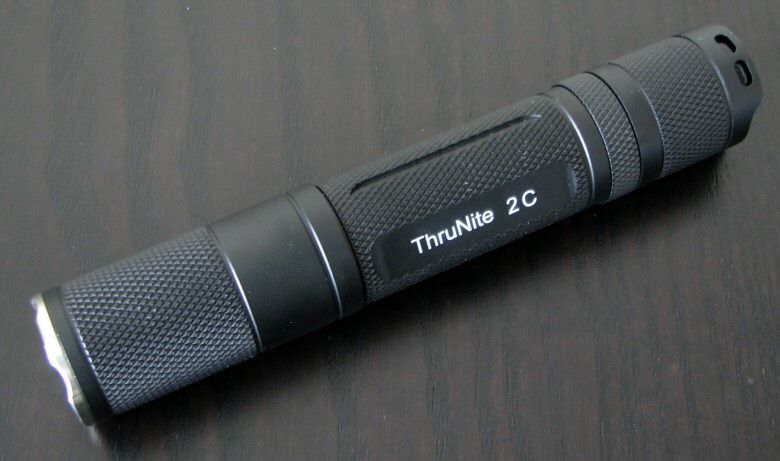
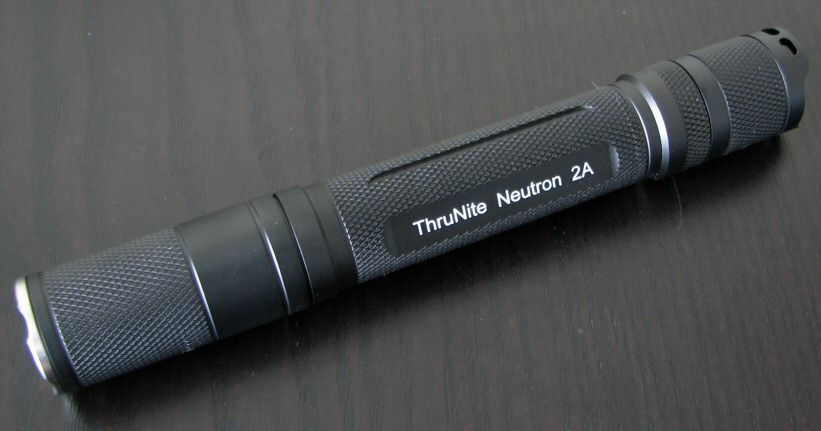
Common Manufacturer Specifications:
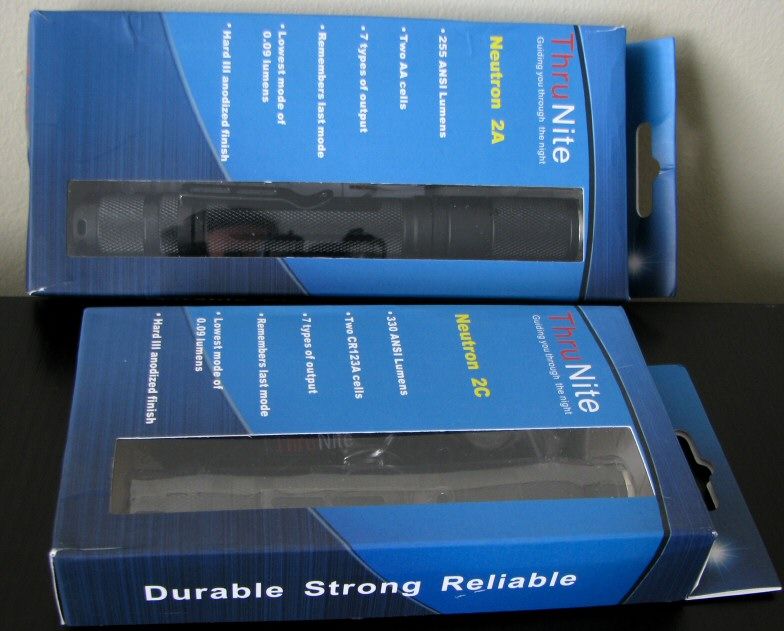
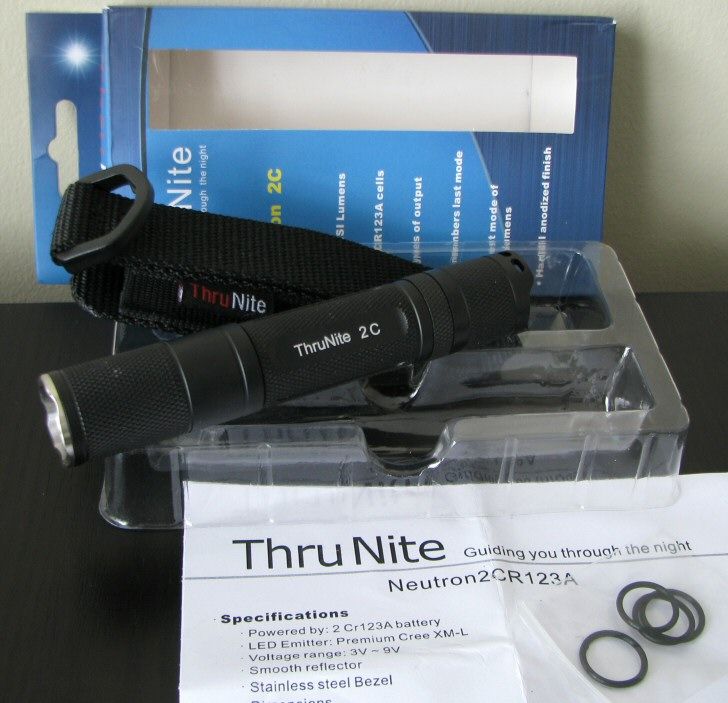
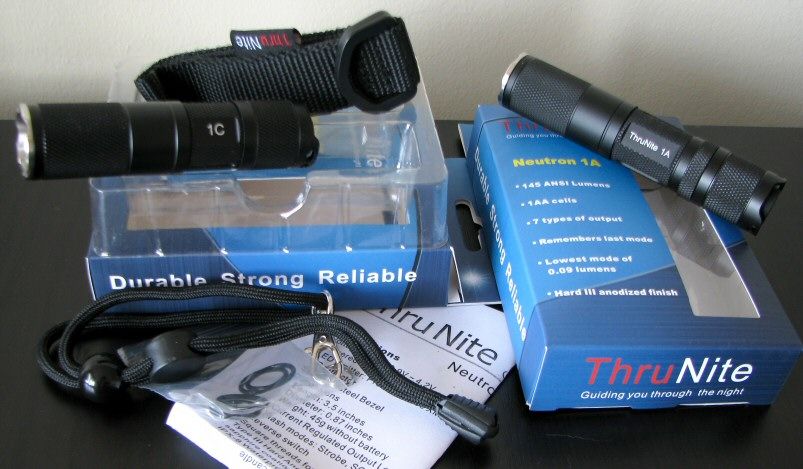
Packaging is fairly typical for these sorts of lights (i.e. simple cardboard box with molded plastic insert). Inside you will find the light, manual, wrist lanyard, spare o-rings and elastic belt holster.
All dimensions given with no batteries installed:
Neutron 1C: Weight: 45.2g, Length: 91.5mm, Width (bezel/tail) 22.0mm
Neutron 2C: Weight: 57.6g, Length: 123.8mm, Width (bezel/tail) 22.0mm
Neutron 1A: Weight: 60.4g, Length: 156mm, Width (bezel/tail) 22.0mm
Neutron 2A: Weight: 76.4g, Length: 250mm, Width (bezel/tail) 22.0mm
Scroll down to the individual light reviews for comparison pics to other lights.
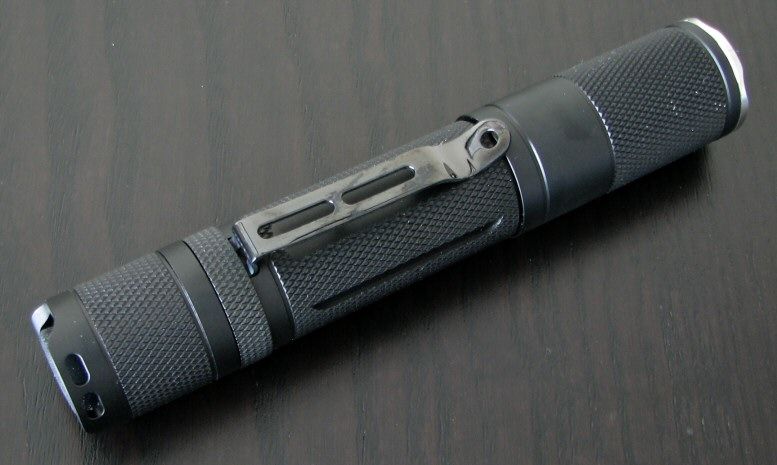
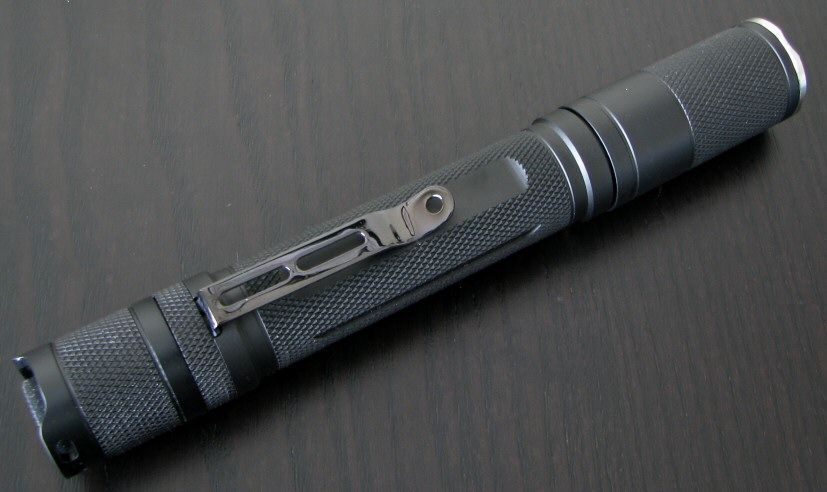
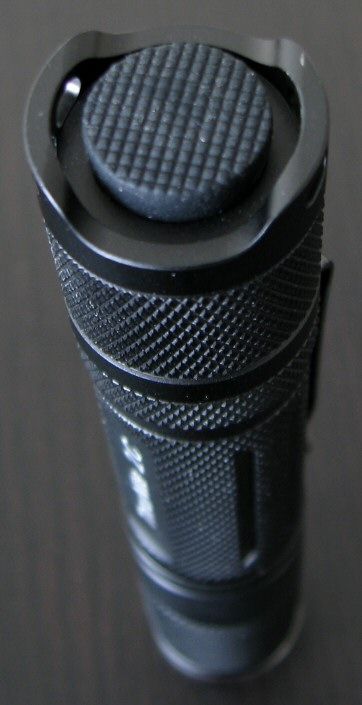
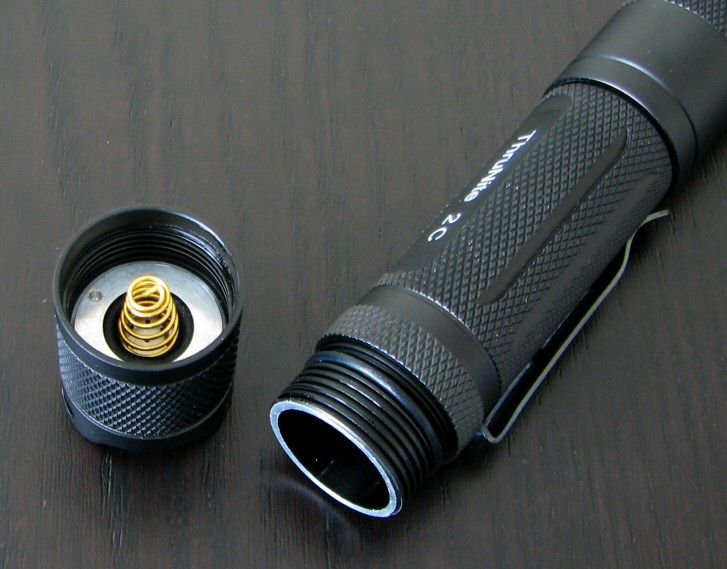
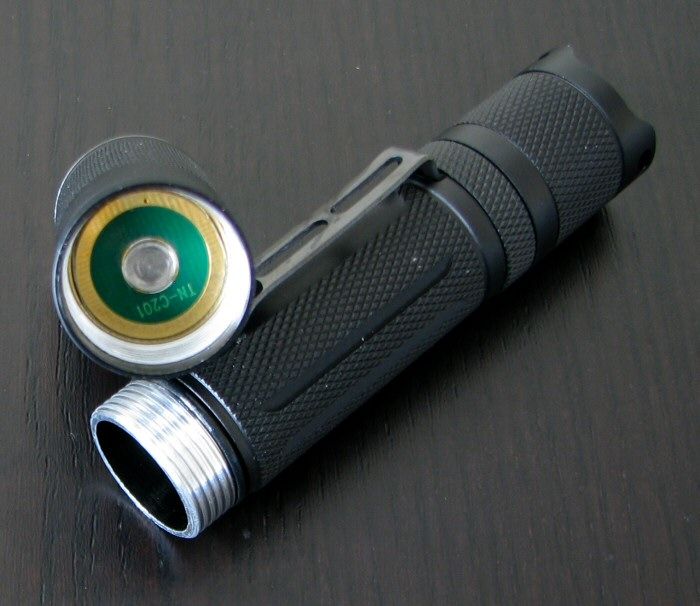
The Neutron series build is pretty much what you would expect for this sort of family of lights. The components are generally interchangeable among the family (i.e. common threading and diameters for the heads/tails).
On the whole, they look the most like the 4Sevens Quark lights, but there are some similarities to the Fenix and Olight lights as well. The most distinctive aspect is probably the consistency along their lengths - the Neutrons are among the most cylindrical (i.e. cigar-shaped) of all the lights I've tested (e.g. bezel and tail diameters are identical, and the body tube is only slightly thinner).
Black anodizing (type III = HA) is matte-finish, and lettering is bright white and clear on the black background. Knurling is generous and reasonably aggressive (more aggressive than most). :thumbsup:
Tail threads are anodized at body the battery tube and tailcap regions, allowing for lock-out. The lights can tailstand, but there was a bit a wobble on one of my samples. Note the switches are all reverse-clickies.
All lights except the 1C come with a removable forward-facing pocket clip (with a ring cover over the attachment point). Note the clip is not reversible. And although the heads and tails could be reversed on the body tube (i.e. common threading), the anodized tailcap threads would prevent you from using most of the modes if you tried this.
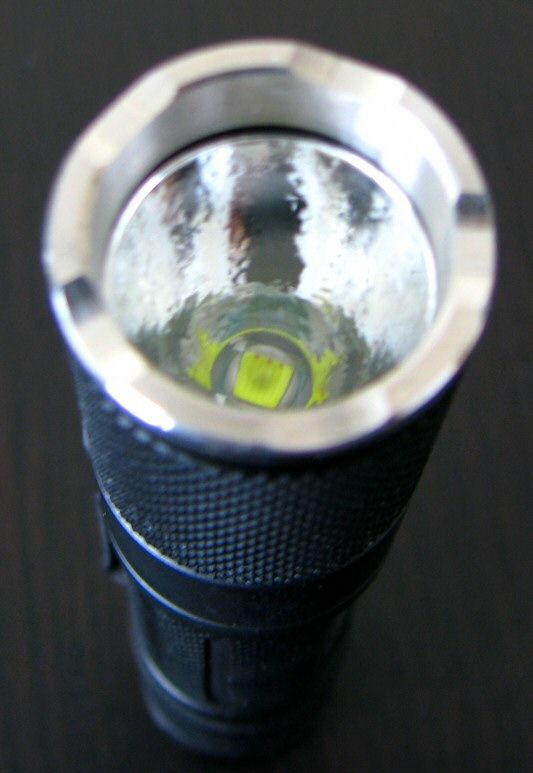
There's nothing wrong with the emitter above - that's just a shadow from the camera angle.
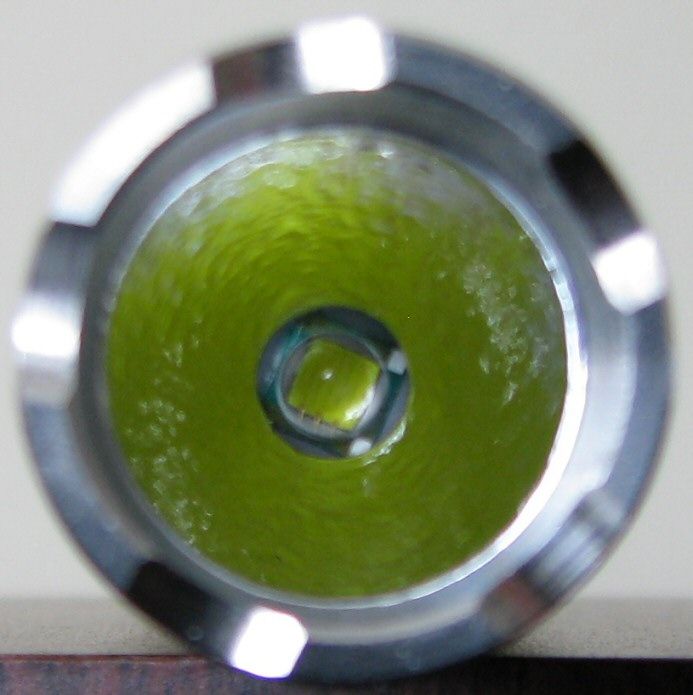
The Neutron family comes with the latest high-output Cree emitter, the XM-L. Reflector is common to all models, and is fairly deep and MOP-textured. Emitters were all well centered on my samples.
Due to the larger size die of the emitter, I would expect these lights to be somewhat floody - but with a narrower spillbeam width due to the deep reflectors. Scroll down to my individual reviews for beamshot comparisons to other lights of their respective classes.
User Interface
The UI will feel familiar to users of the regular 4Sevens Quark or Fenix LDx0/PDx0 series lights.
Turn on/off by fully pressing the reverse clicky switch (i.e. click needed to turn on).
With the head slightly loosened, you get one of five possible modes. Soft-press the switch to advance through Firefly, Lo, Med, Hi, and SOS, in repeating sequence. The light has mode memory, and retains the last setting used when you come back into the head loosened state.
With the bezel fully tightened, you get Turbo. Soft-press to advance to rapid Strobe (soft-press again or turn off to get back to Turbo). There is no memory for the head-tightened mode – you always get Turbo on activation with the head tightened.
PWM/Strobe
Despite the claimed current-control in the specifications for this family, I found all lights used pulse width modulation (PWM) on the Lo/Med/Hi output modes.
The frequency on the 1C, 1A, and 2A lights was consistently high, measured at 4 kHz at all levels. This is sufficiently high that you won't see it in practice.
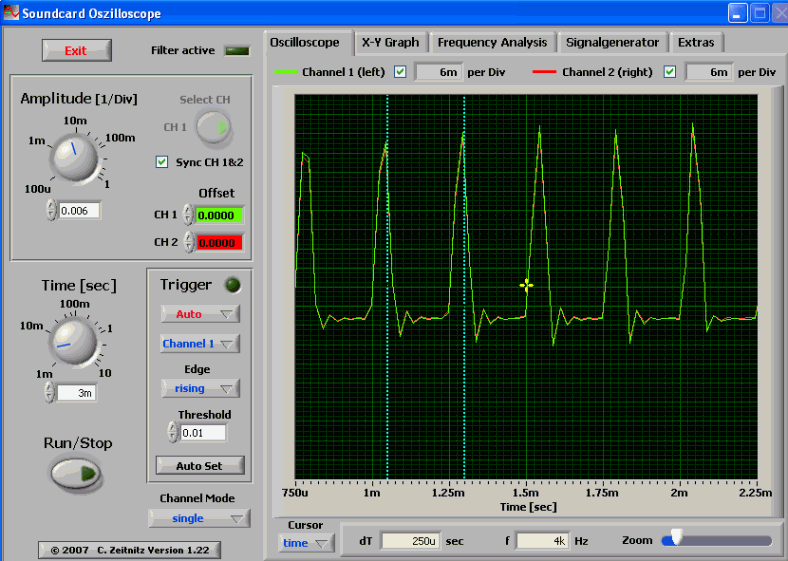
The 2C was a different matter, however. PWM was a very noticeable 110 Hz at Lo-Med-Hi levels. I found this to be very distracting, especially on the Lo mode. :shakehead

Strobe was consistently in the low 13 Hz range on my samples (i.e. 13.0 – 13.4 Hz).
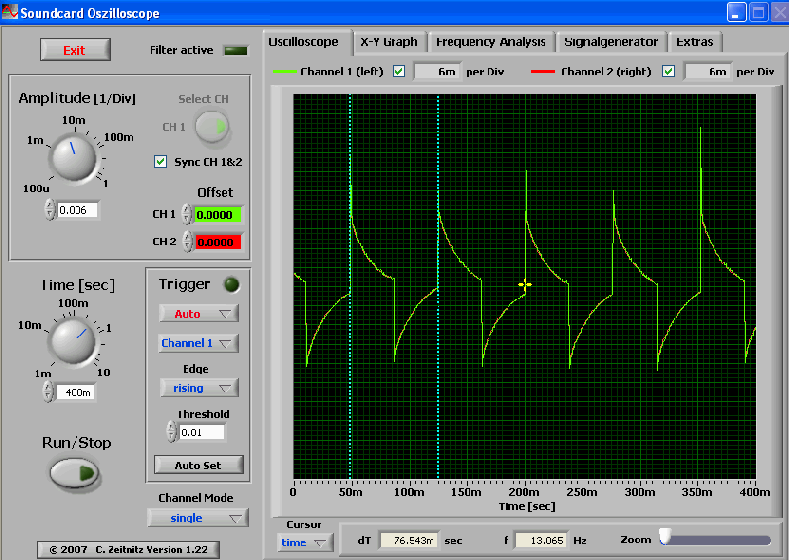
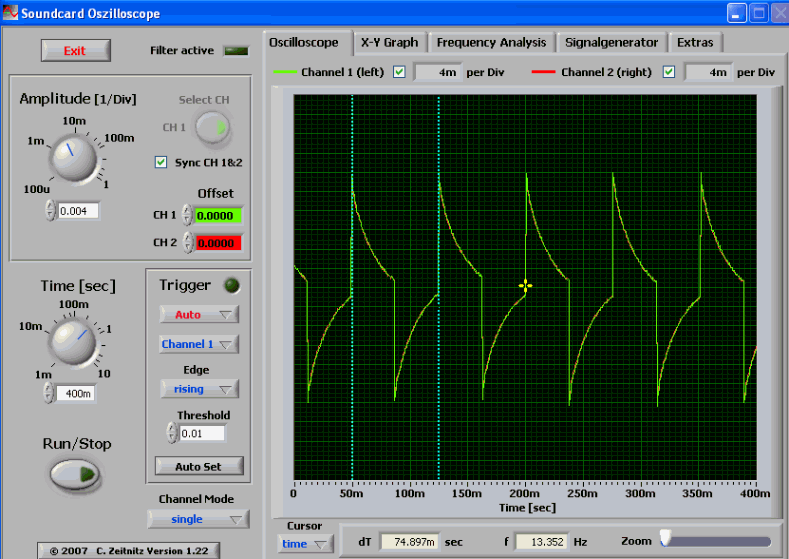
Testing Method:
Effective November 2010, I have revised my summary tables to match with the current ANSI FL-1 standard for flashlight testing. Please see http://www.sliderule.ca/FL1.htm for a description of the terms used in these tables.
All my runtime graph output numbers are relative for my home-made light box setup, a la Quickbeam's flashlightreviews.com method. You can directly compare all my relative output values from different reviews - i.e. an output value of "10" in one graph is the same as "10" in another. All runtimes are done under a cooling fan, except for any extended run Lo/Min modes (i.e. >12 hours) which are done without cooling.
I have recently devised a method for converting my lightbox relative output values (ROV) to estimated Lumens. See my How to convert Selfbuilt's Lighbox values to Lumens thread for more info.
-------------------
Individual Light Runtime/Output Comparisons
Neutron 1C
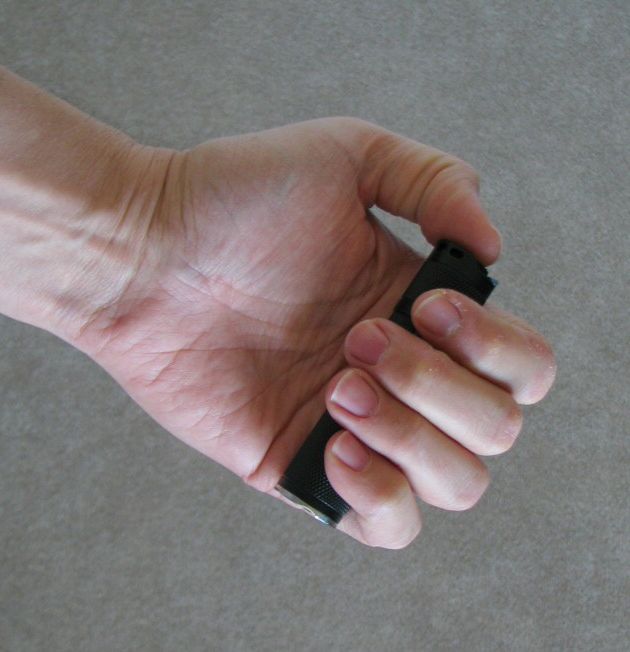
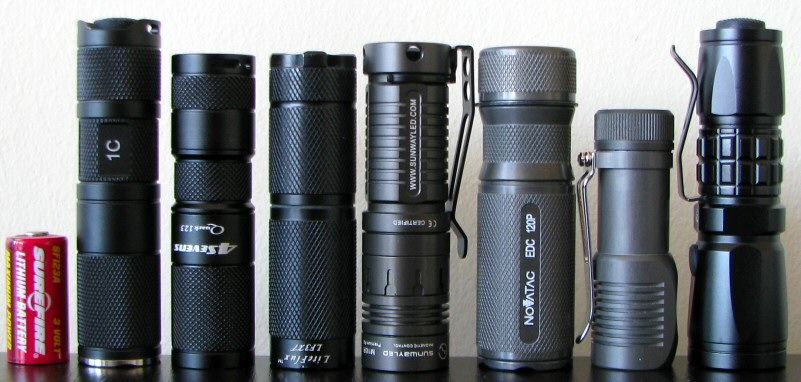
From left to right: Surefire CR123A; Thrunite Neutron 1A; Foursevens Quark Q123; Liteflux LF3XT; Sunwayman M10R; Novatac 120P; Zebralight SC30; ITP SC1.
All lights are on Hi on RCR (AW Protected where available), about ~0.75 meter from a white wall (with the camera ~1.25 meters back from the wall). Automatic white balance on the camera, to minimize tint differences.
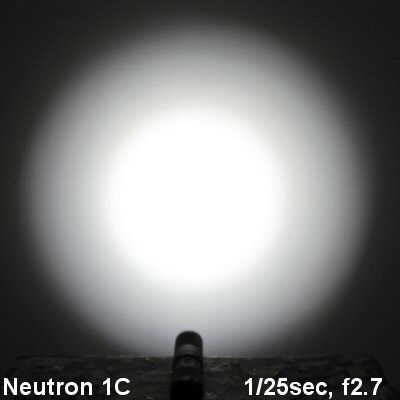
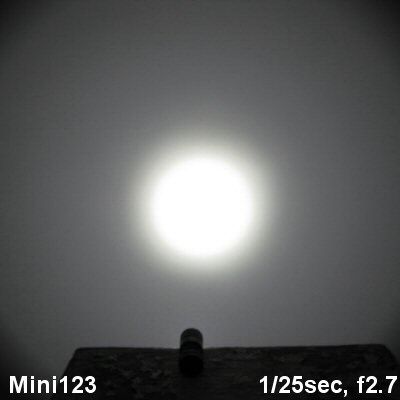
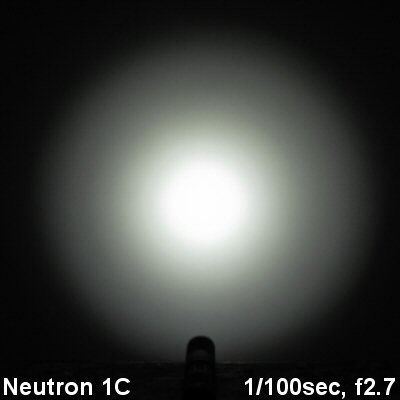
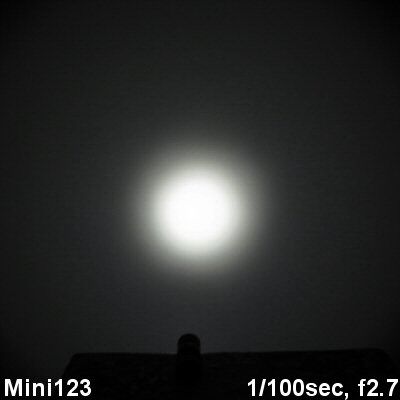
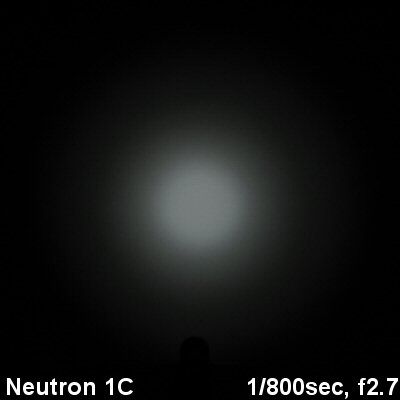
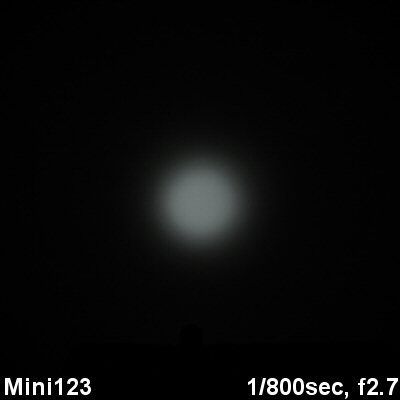
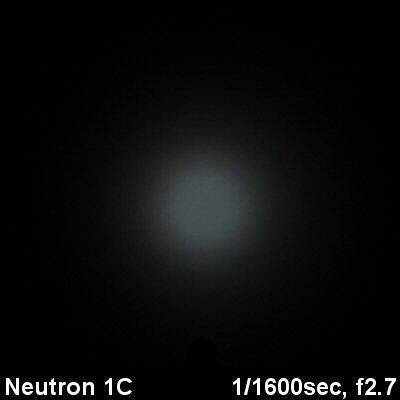
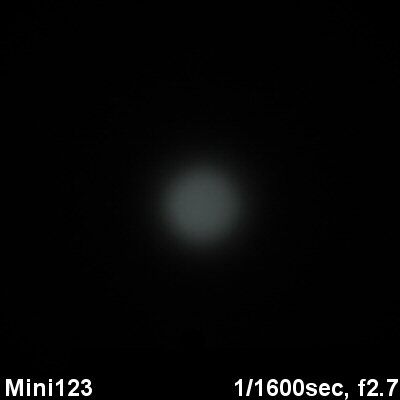


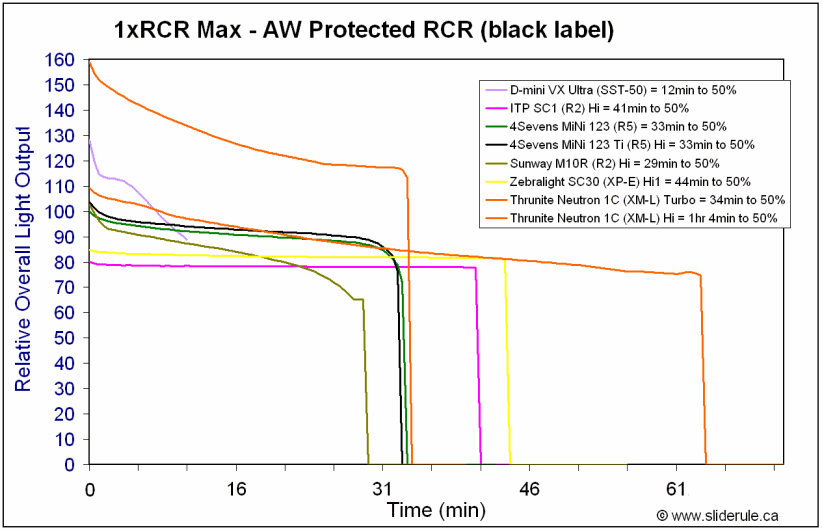
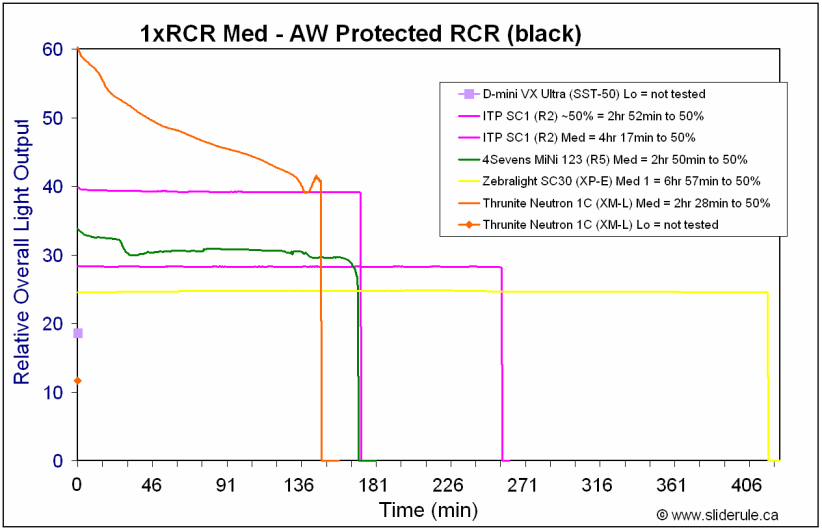
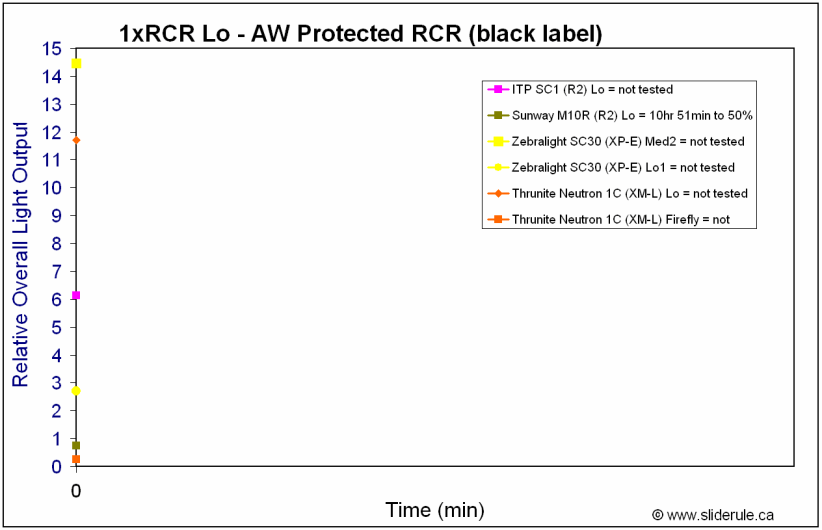
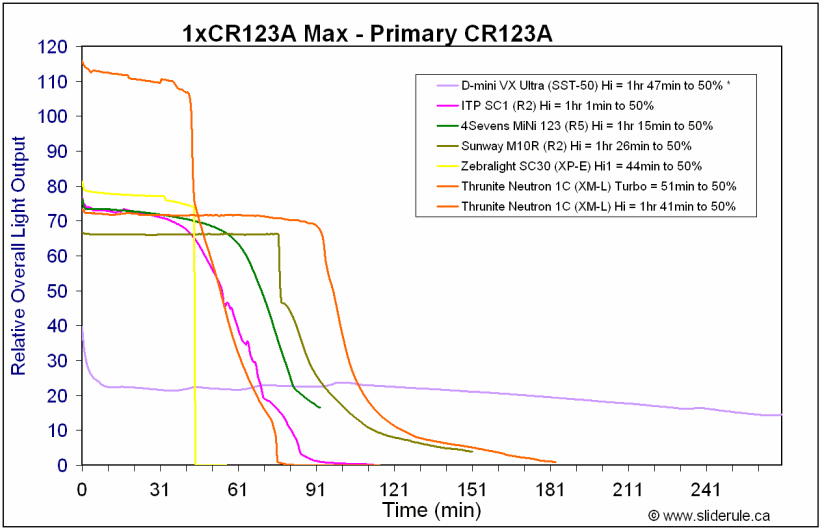
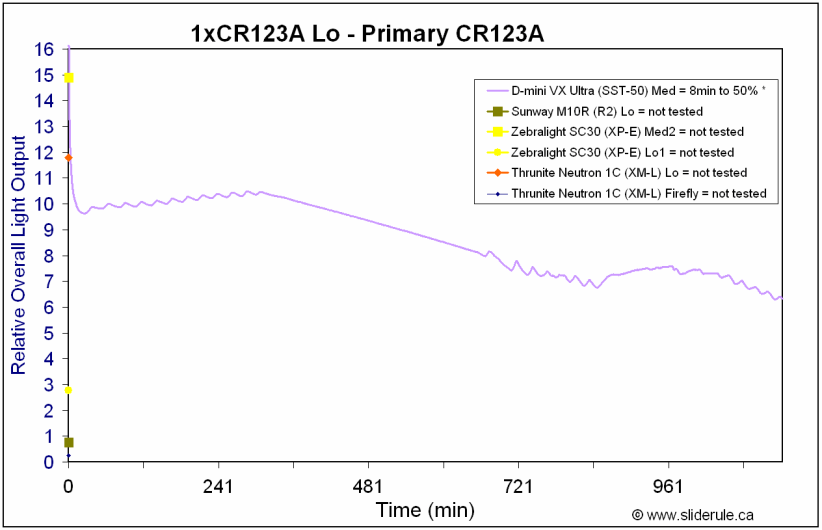
-------------------
Neutron 2C

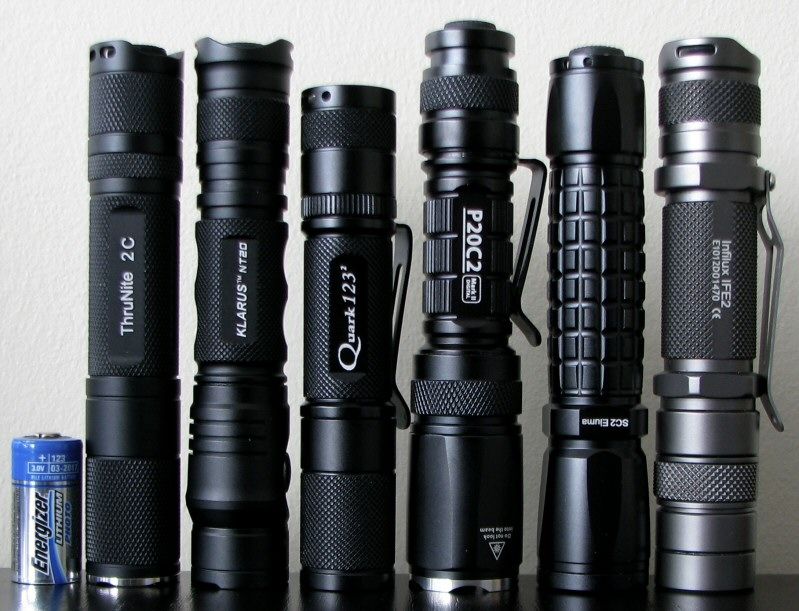
All lights are on Hi on 18650 (AW Protected where available), about ~0.75 meter from a white wall (with the camera ~1.25 meters back from the wall). Automatic white balance on the camera, to minimize tint differences.
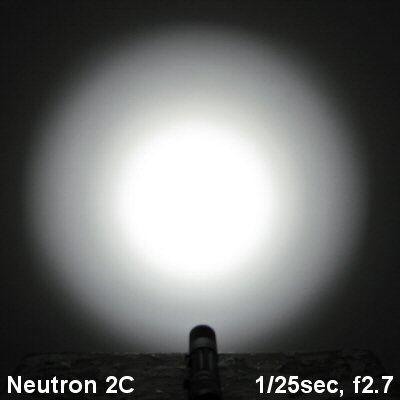
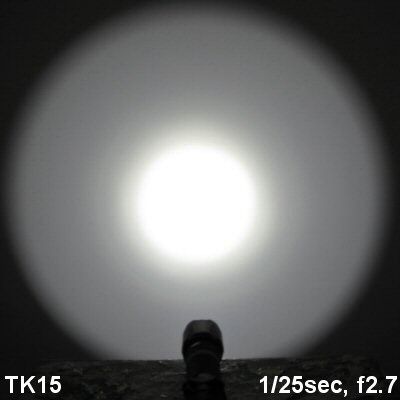
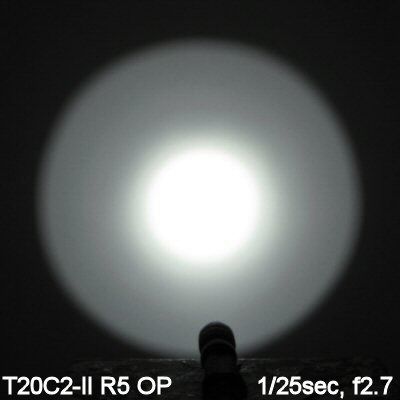
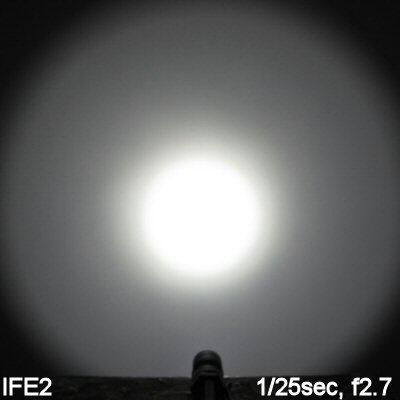
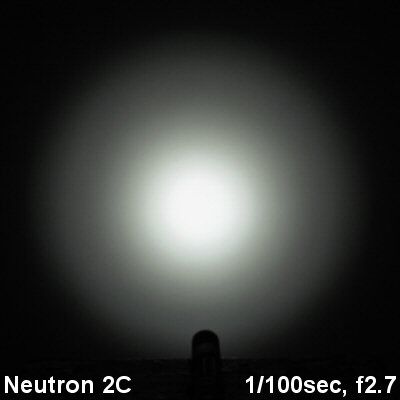
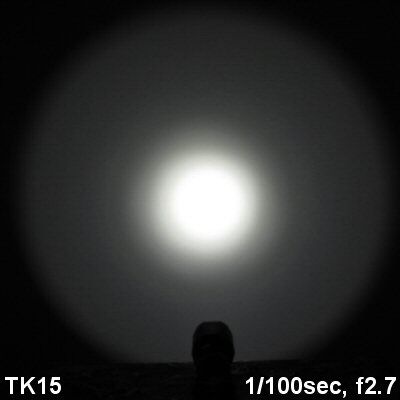
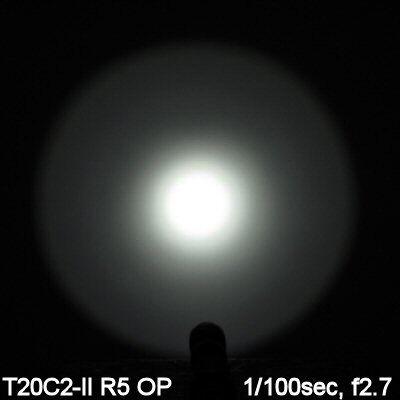
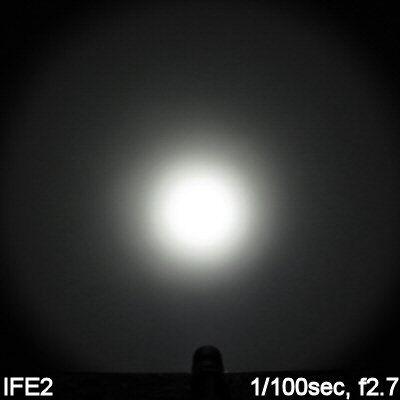
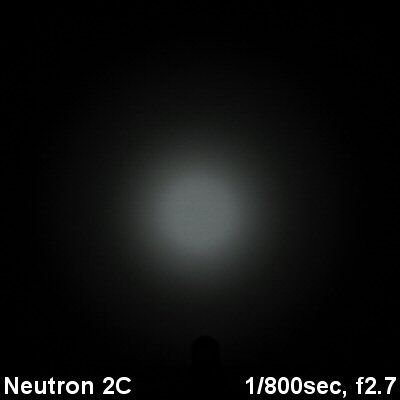
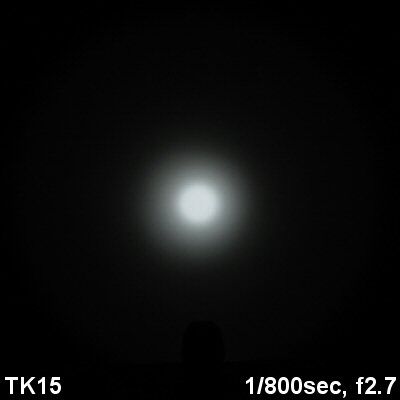
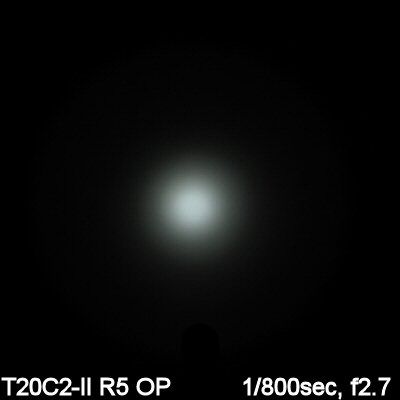
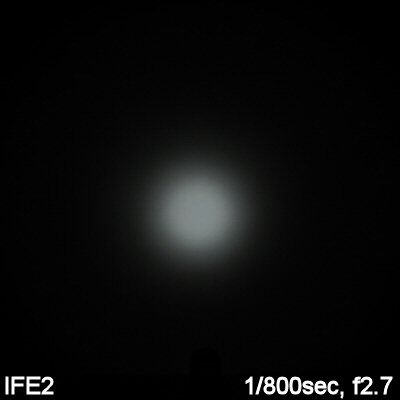
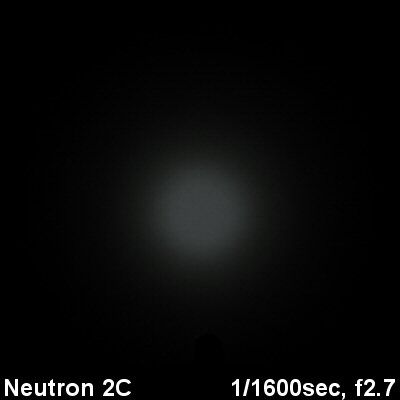
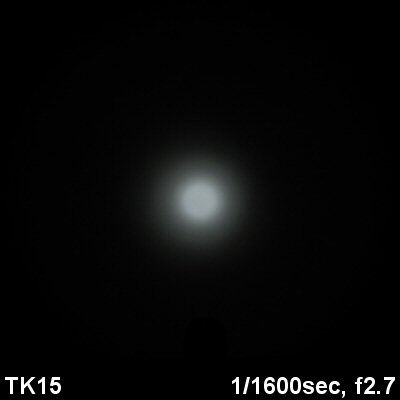
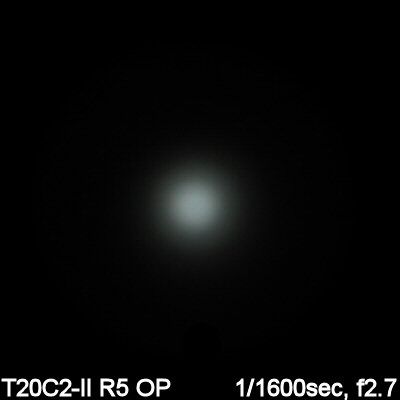
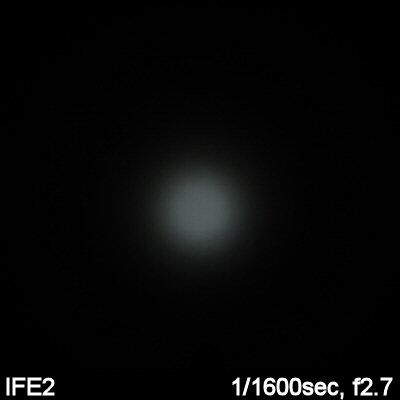
UPDATE March 23, 2011: Summary tables and runtimes for the 2C have just been added below. Note that the 2C cannot take protected 18650 or 17670, so I had to use the much lower capacity 14670 for the runtimes.
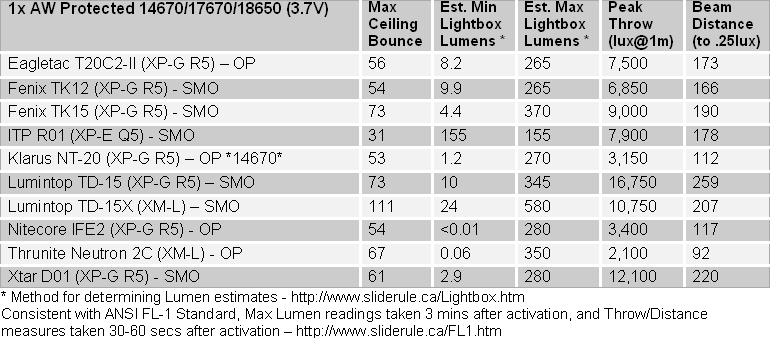
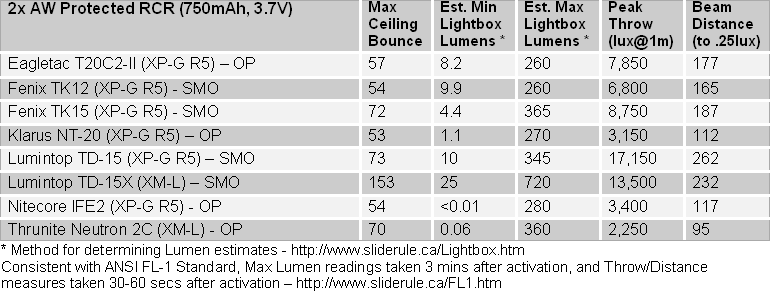
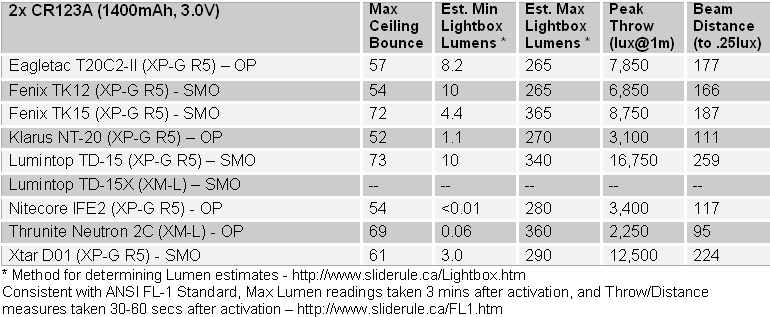

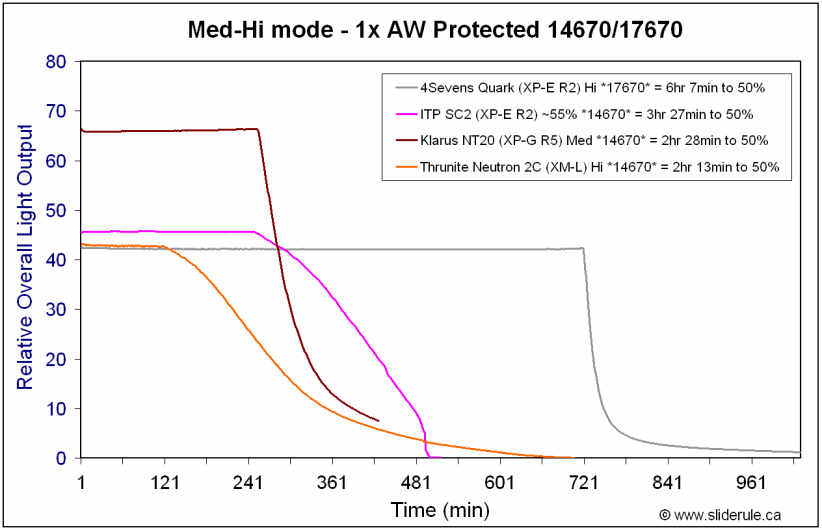
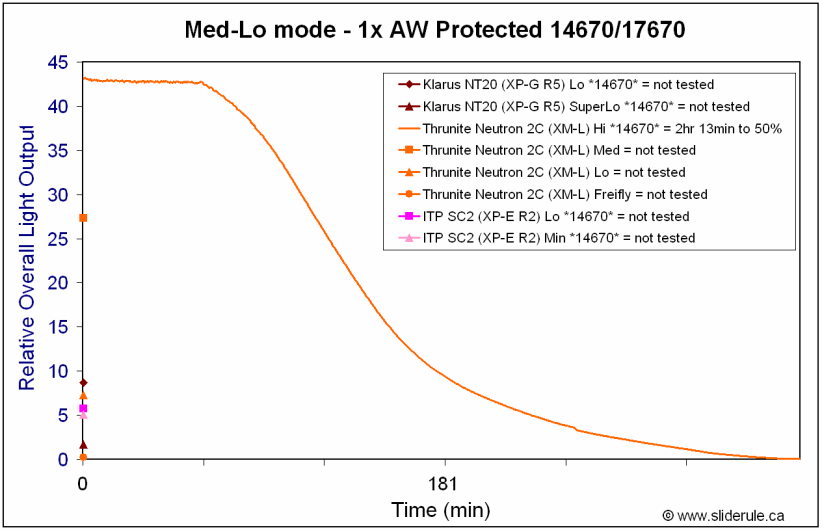
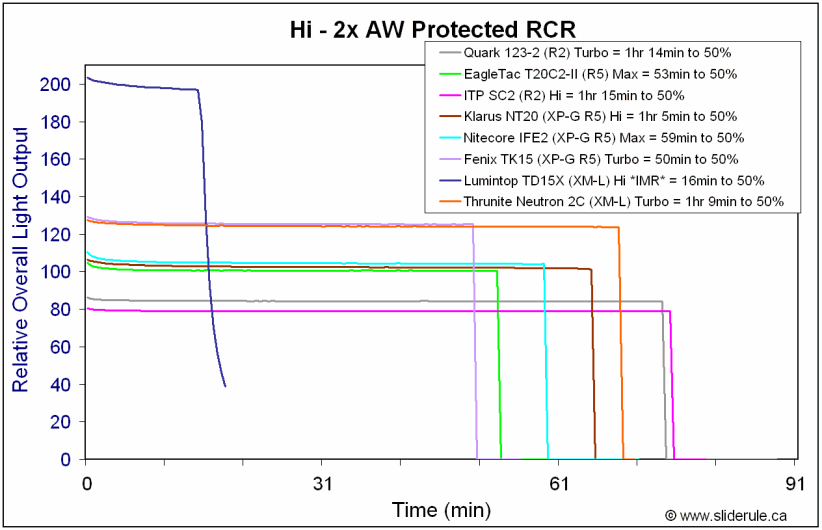
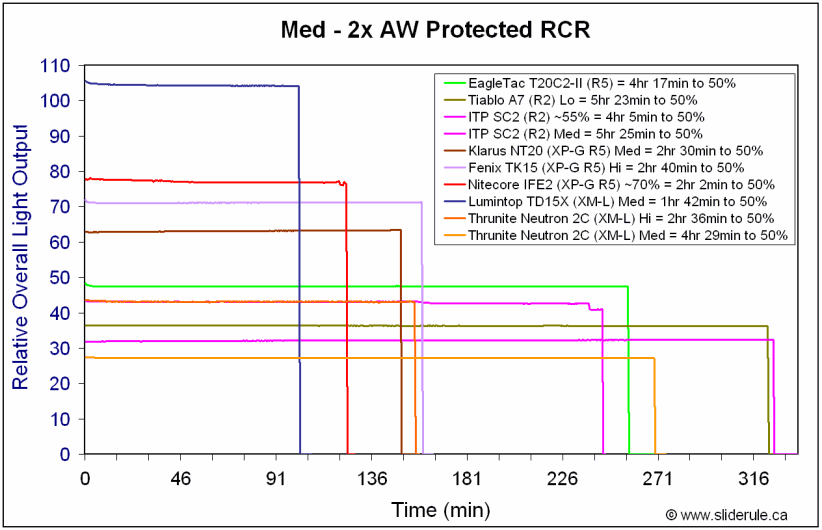
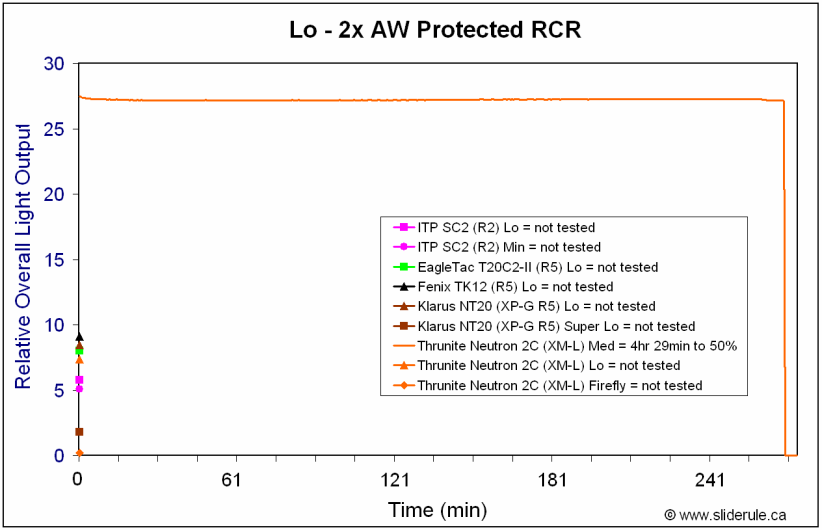
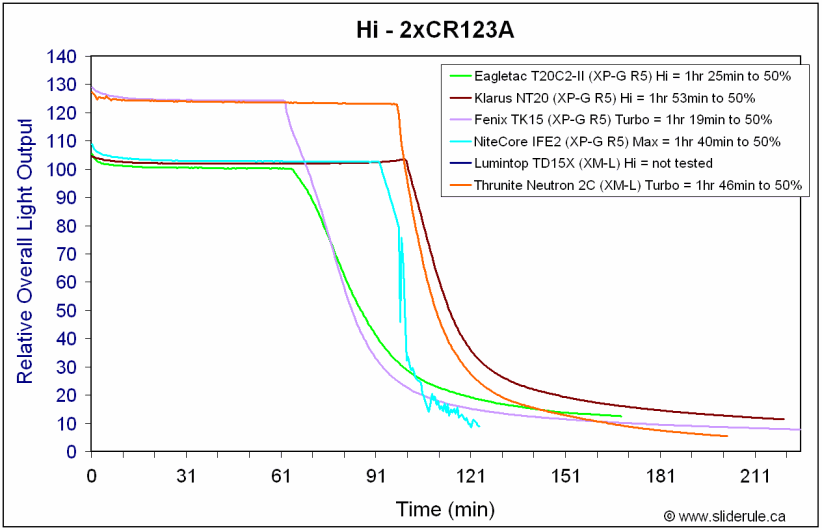
A note about the runtimes above - for some reason, the output levels of the 2C on Lo/Med/Hi are a fair amount lower than the 1A, 2AA or 1C versions. See my new Summary table at the end of the review for a comparison. There also seems to be a drop in efficiency on the 2C on the lower outputs, at least for the Med and Hi mode tested.
-------------------
Neutron 1A
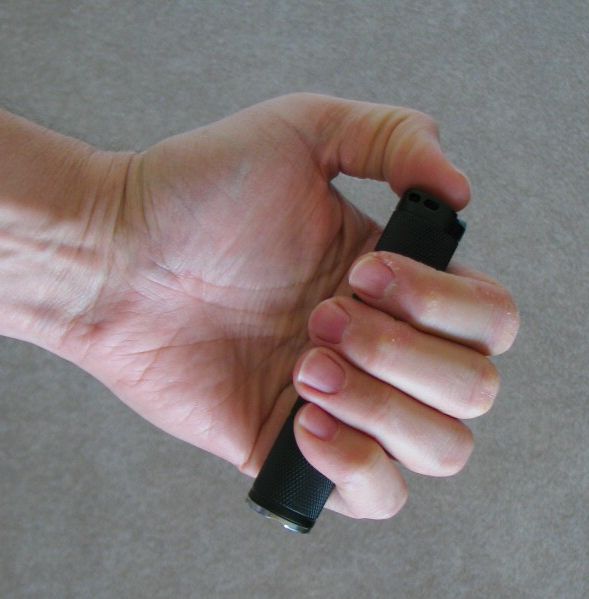
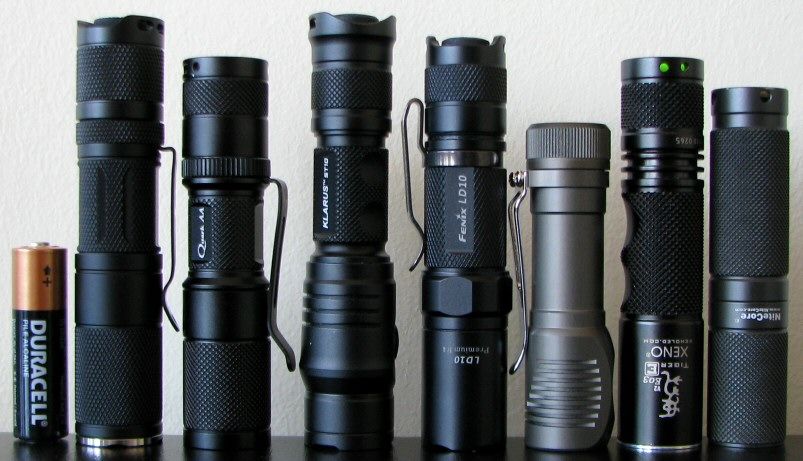
All lights are on Hi on Sanyo Eneloop, about ~0.75 meter from a white wall (with the camera ~1.25 meters back from the wall). Automatic white balance on the camera, to minimize tint differences.
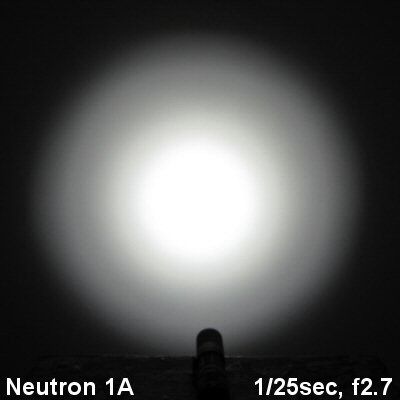
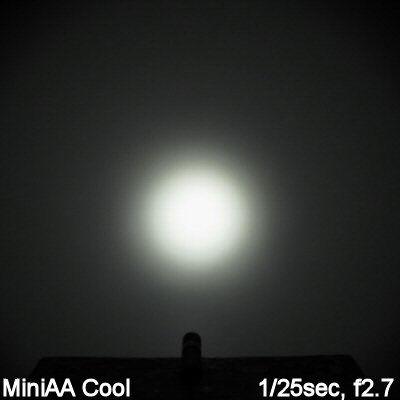
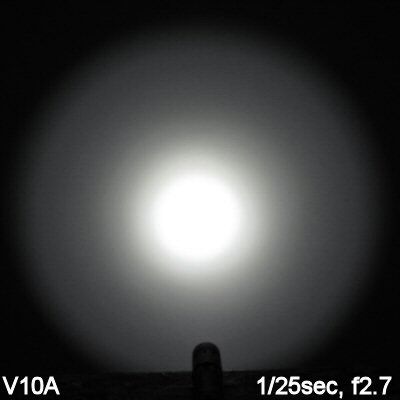
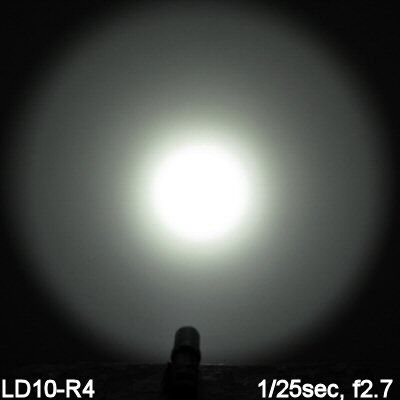
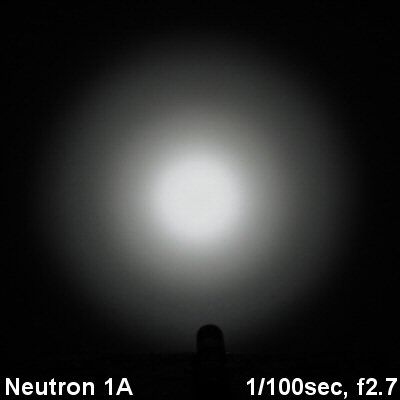
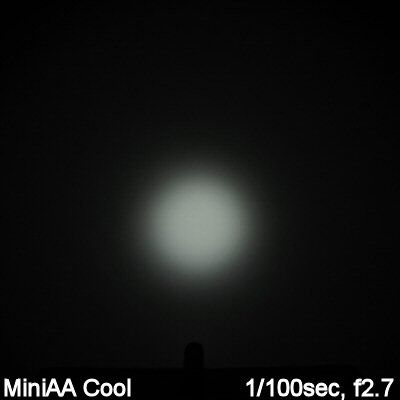
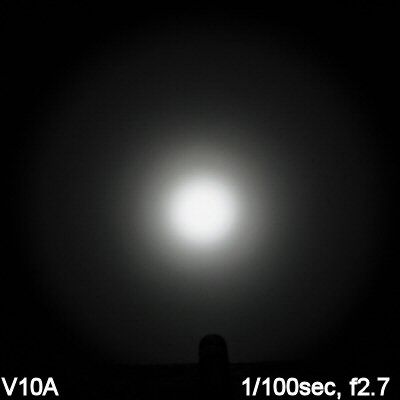
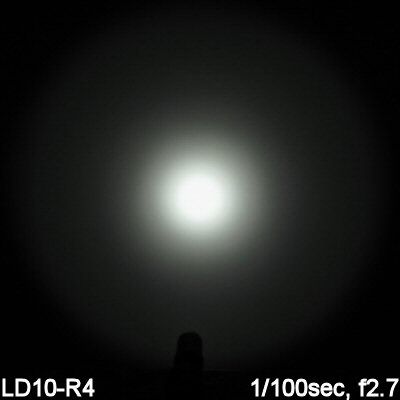
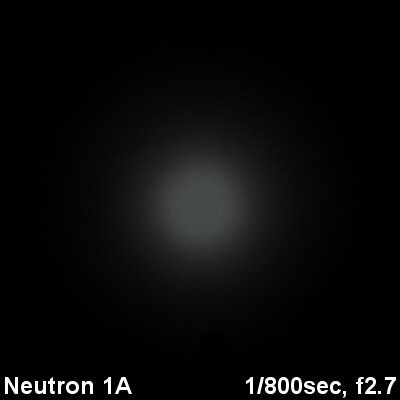
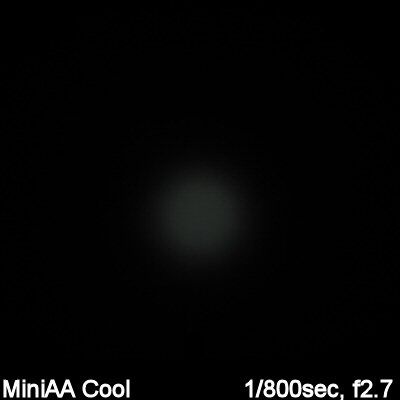
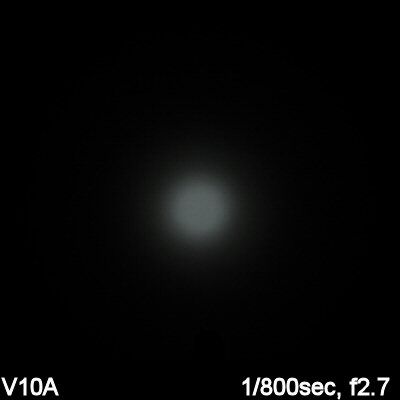
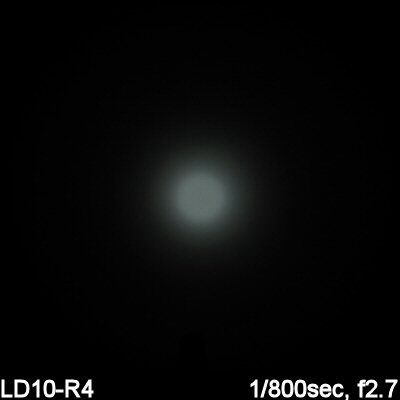
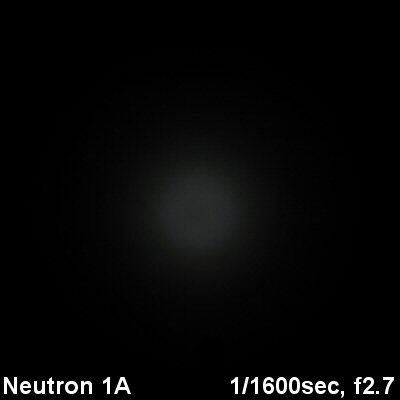
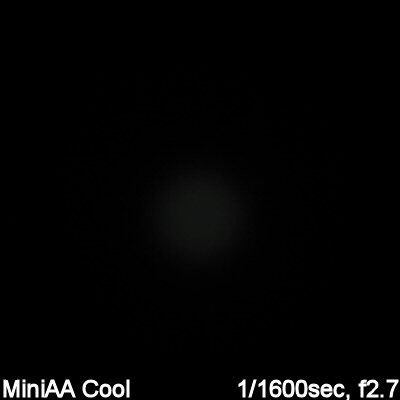
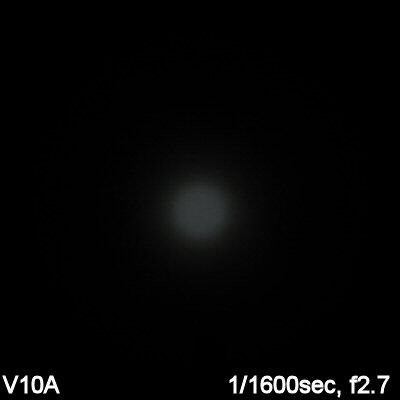
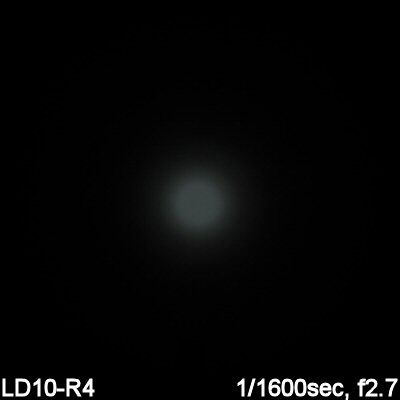
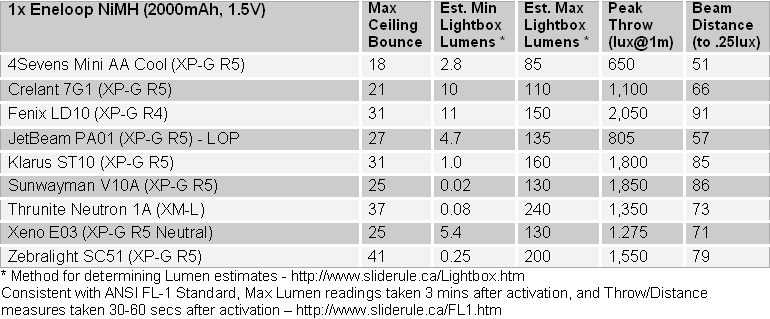
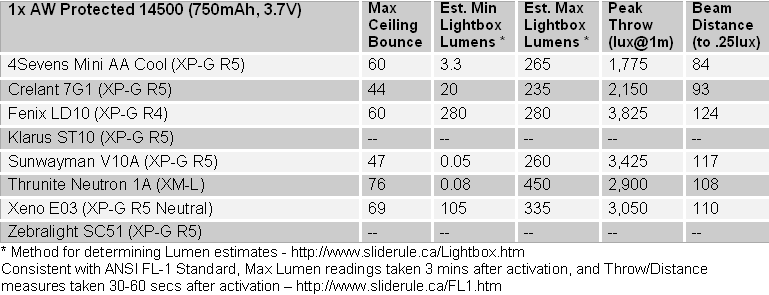
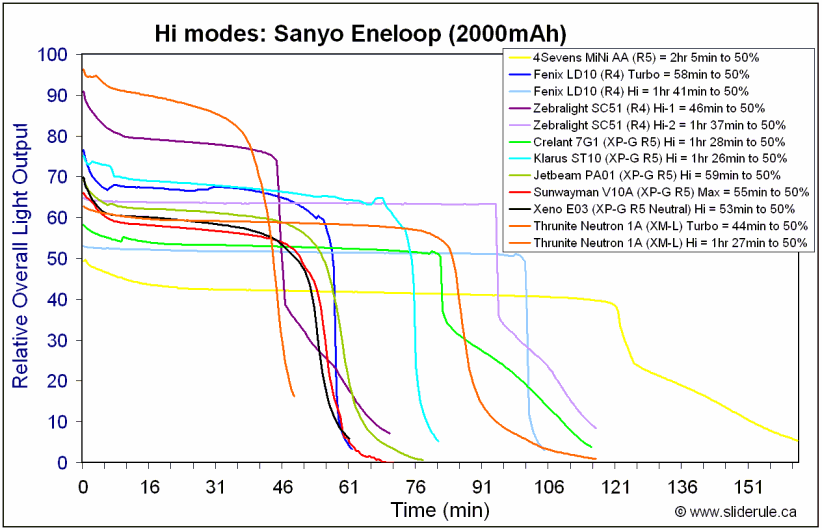
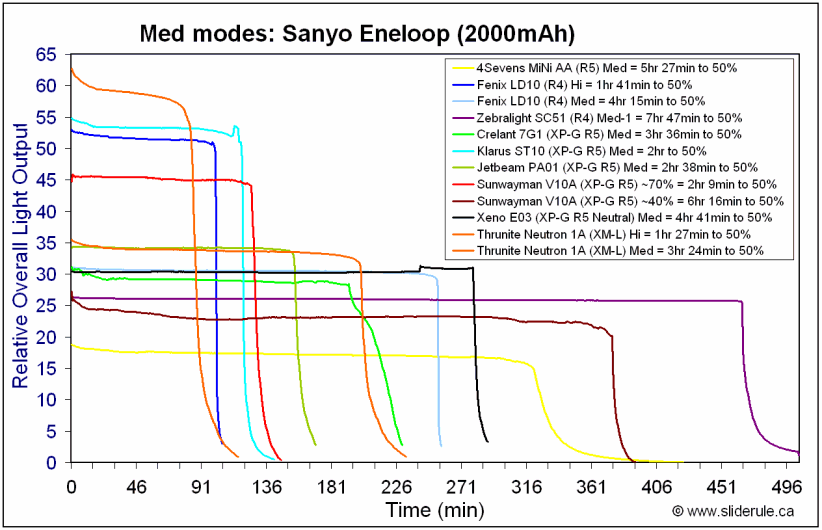
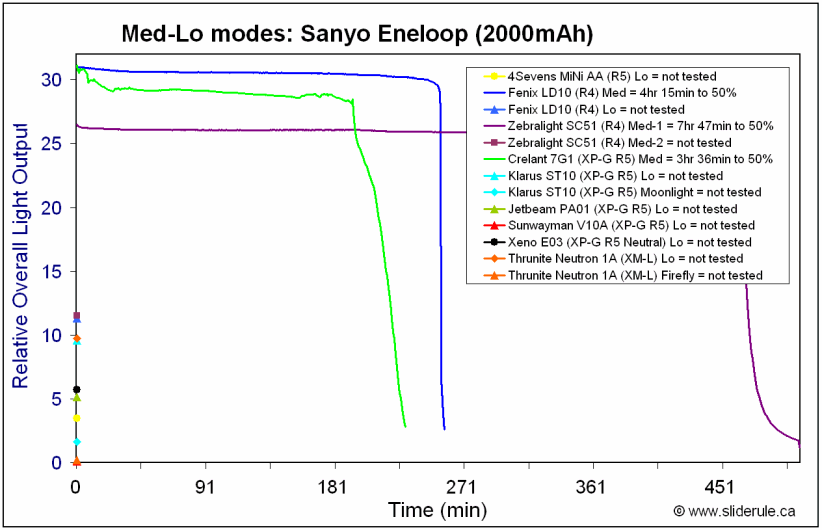
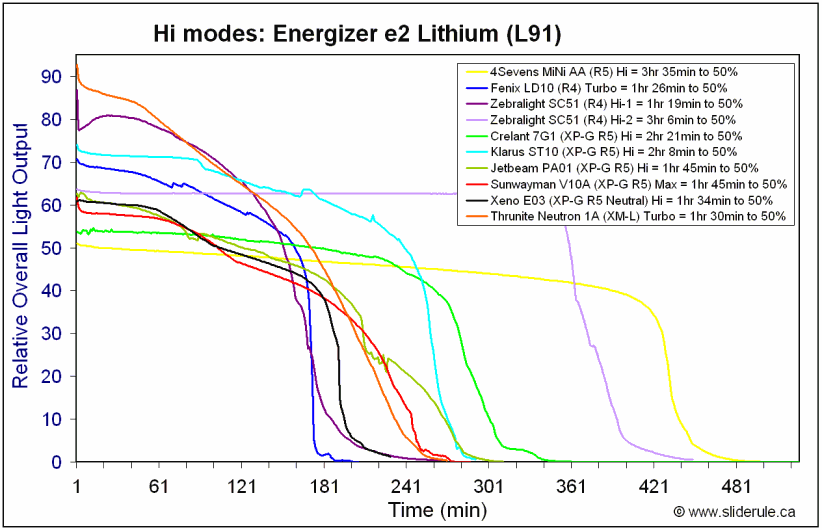
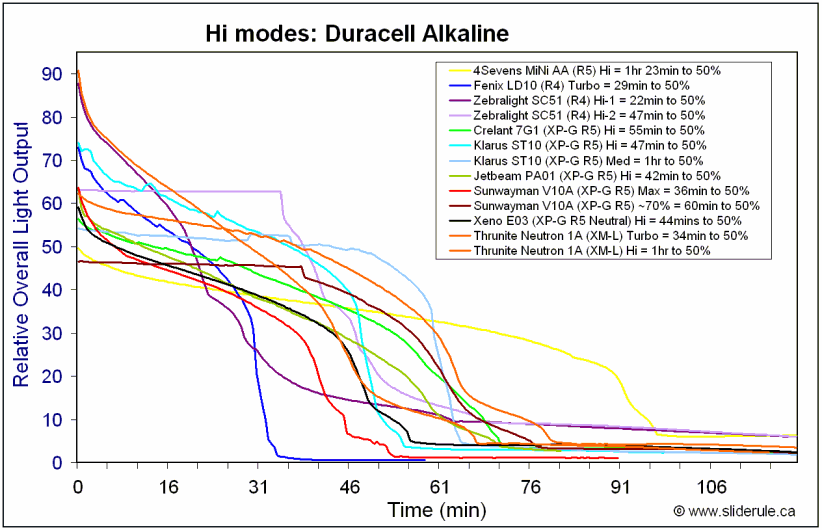
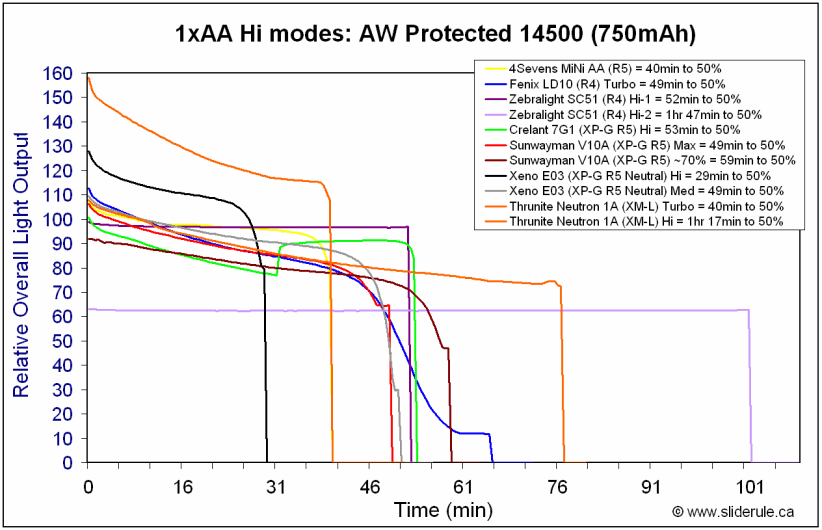
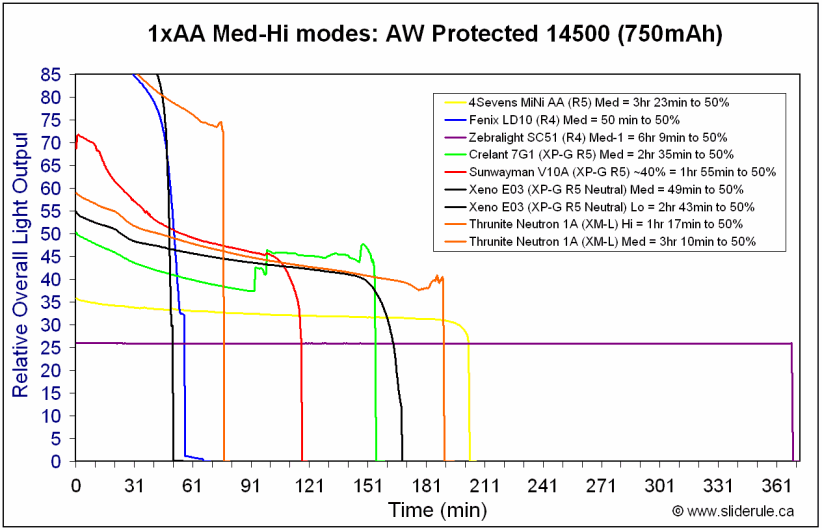
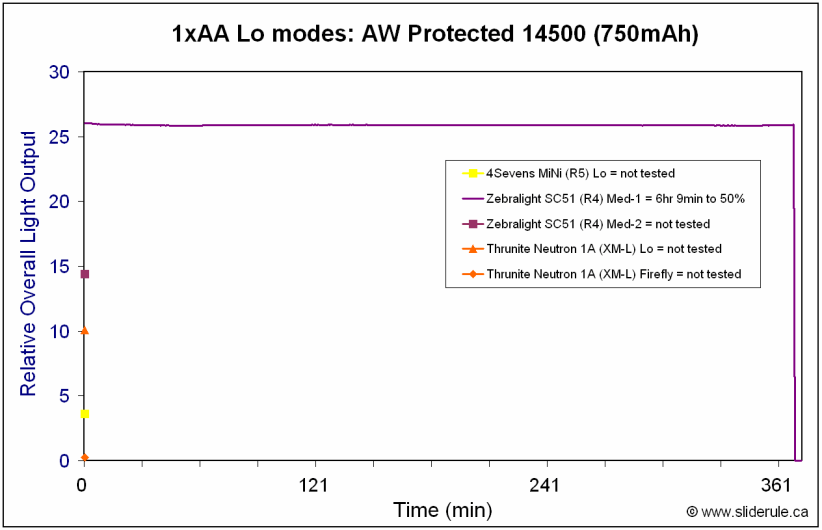
-------------------
Neutron 2A
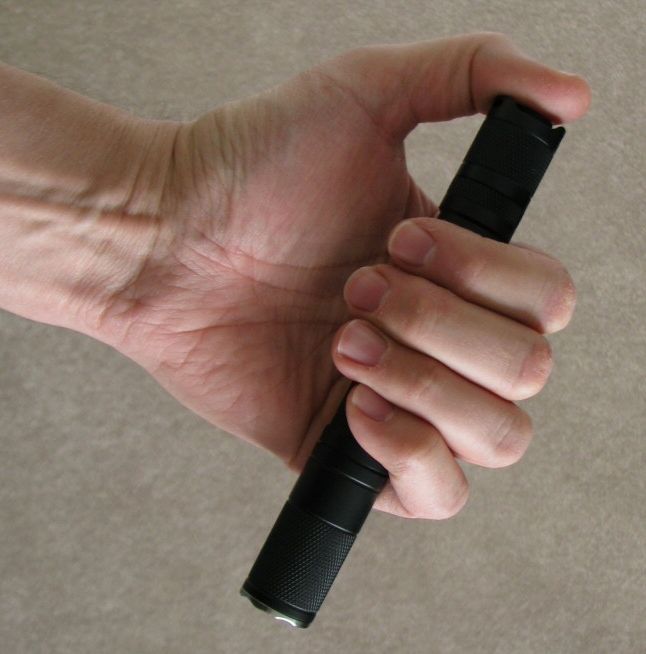
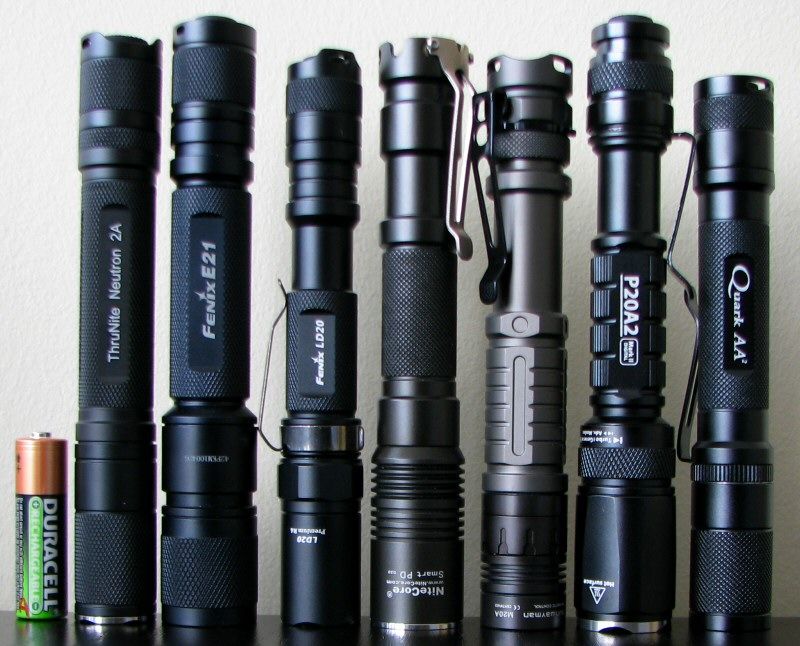
All lights are on Hi on 2x Eneloop NiMH, about ~0.75 meter from a white wall (with the camera ~1.25 meters back from the wall). Automatic white balance on the camera, to minimize tint differences.
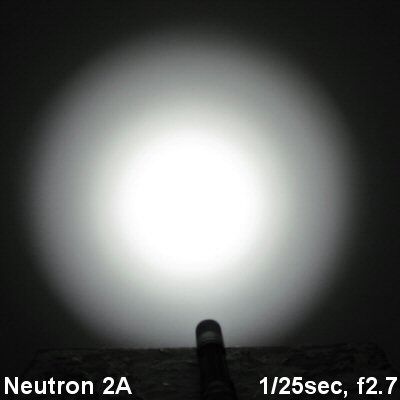
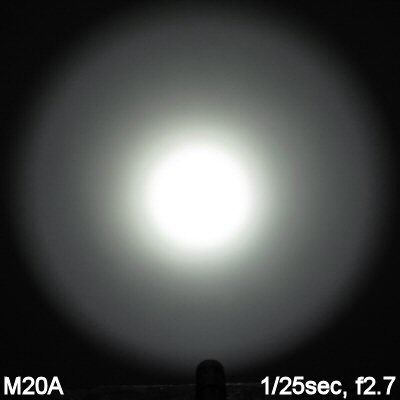
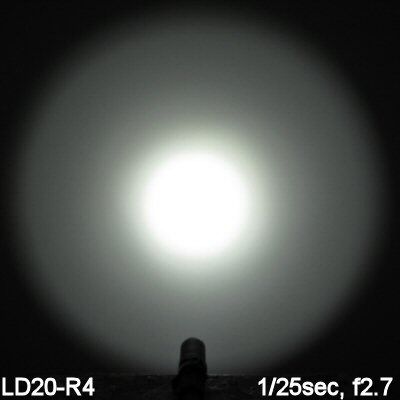
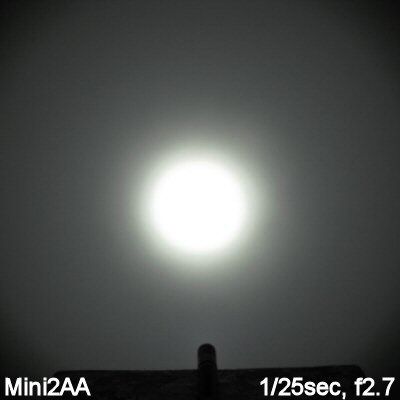
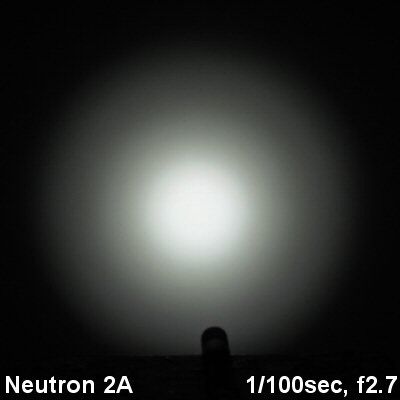
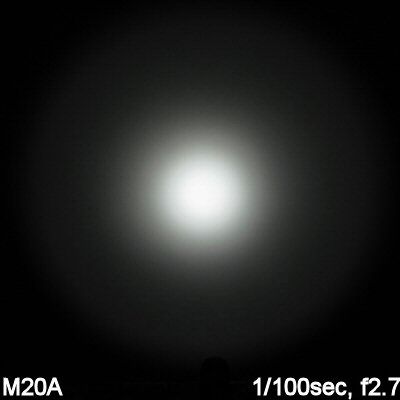
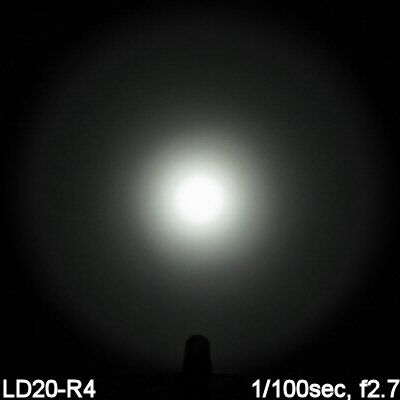
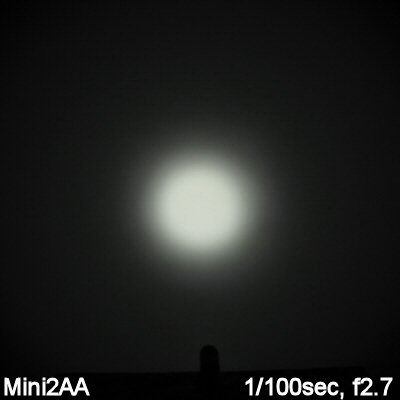
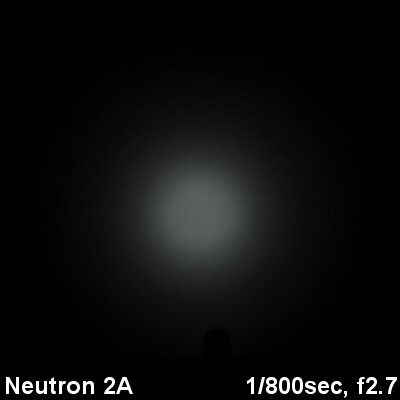
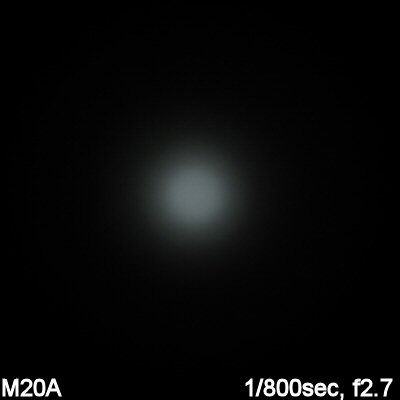
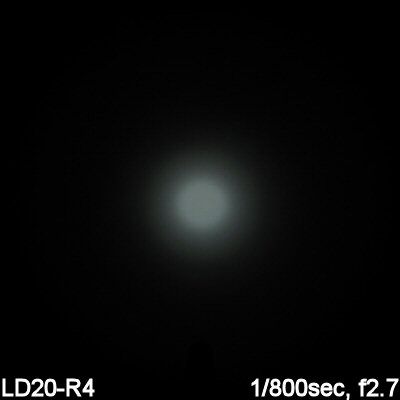
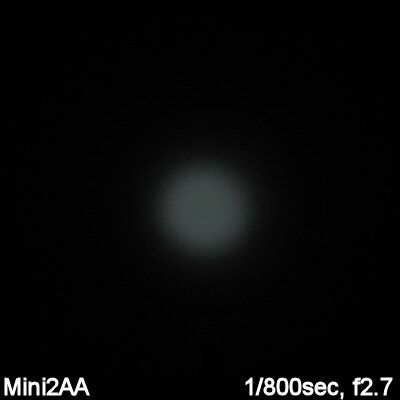
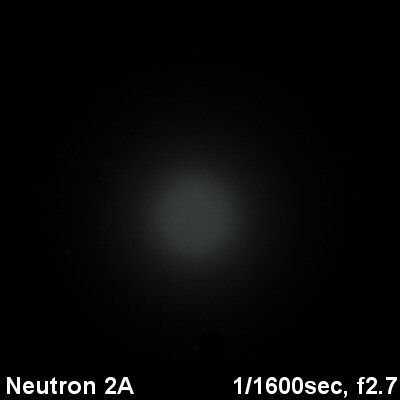
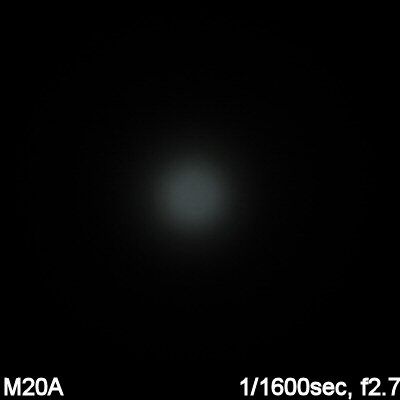
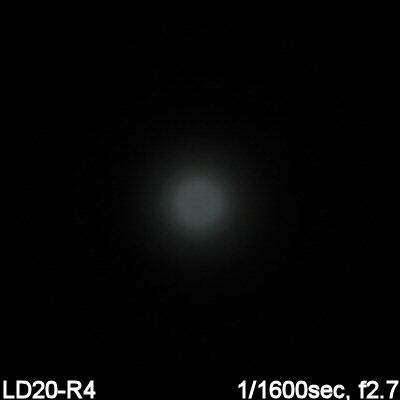
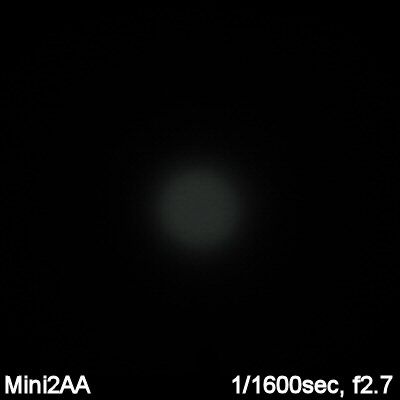

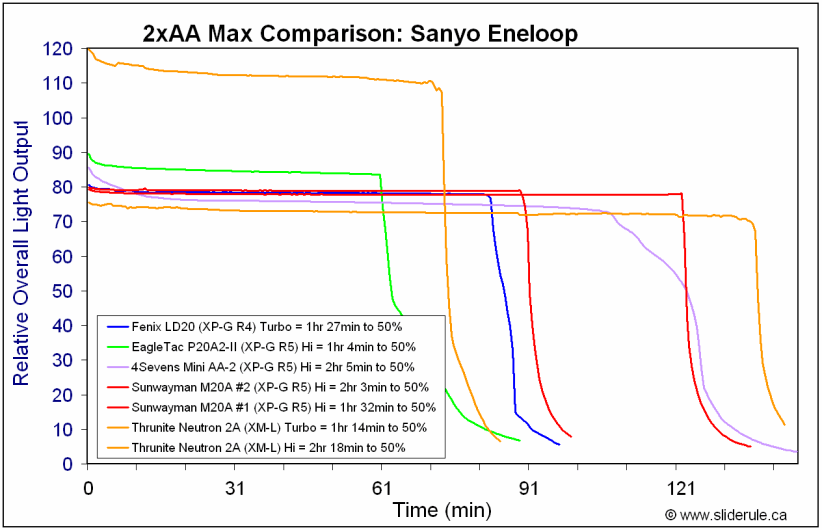
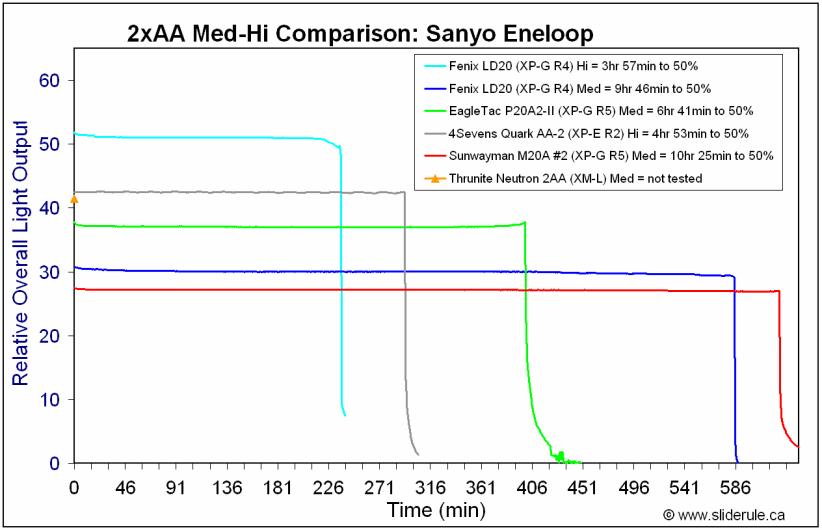
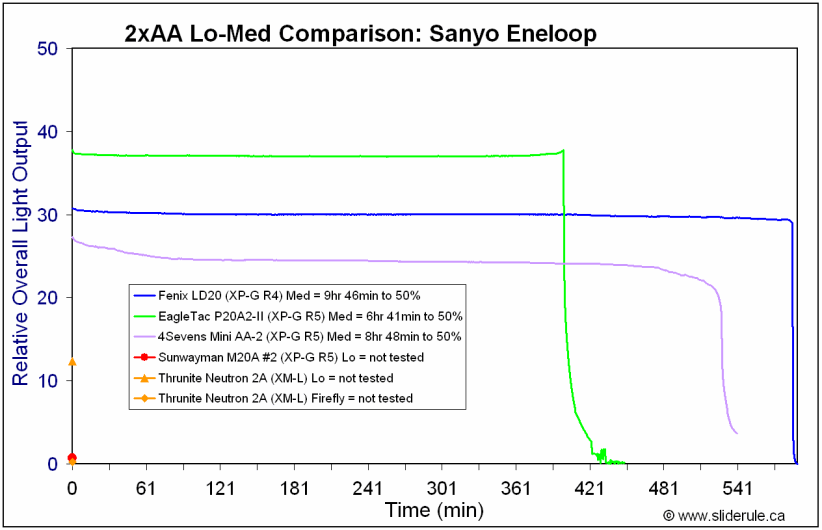
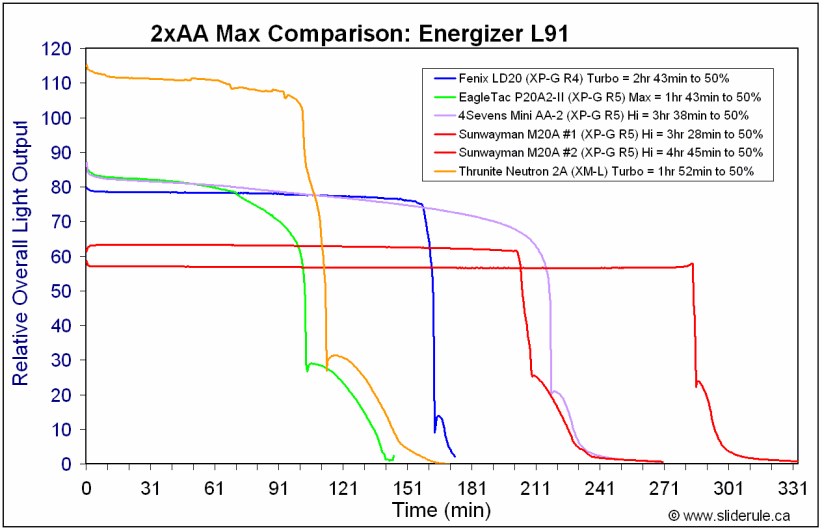
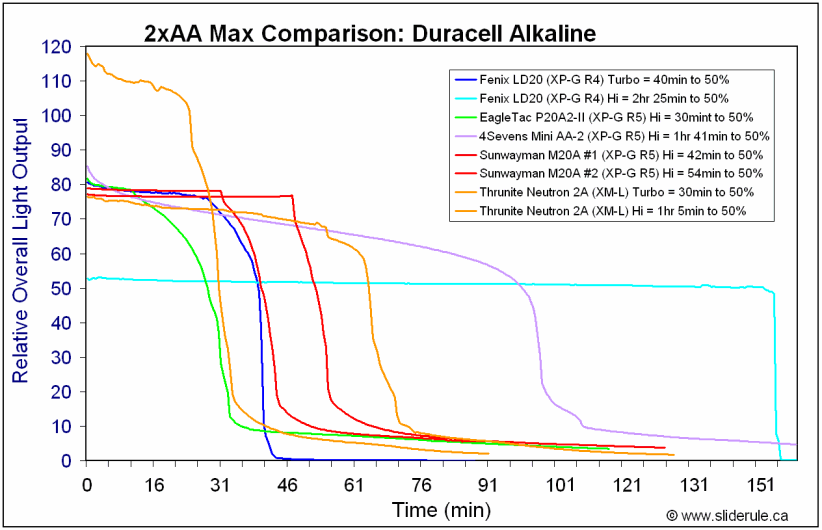
-------------------
Summary of Output Levels
UPDATE March 23, 2011: I have now completed all runtime testing (shown above). For your reference, here is a table showing the relative INITIAL output levels, in estimated Lumens from my lightbox, for all models on various batteries.

A few observations:
---------------------
Potential Issues
The Neutrons use PWM for Lo-Med-Hi levels, not current-control as listed in the specs. PWM is high enough to be undetectable by eye on the 1C, 1A, and 2AA (i.e. 4kHz). However, PWM is a very noticeable 110 Hz on the 2C.
Output levels on Lo/Med/Hi is lower on the 2C compared to the other lights of the series, and there is a clear relative drop in efficiency at these levels (i.e. the 2C performs at below the level of a typical XP-E R2 light on Med/Hi).
My 2AA sample was defective on its Firefly mode (i.e. no light produced). All other samples performed as expected.
Switches are reverse clickies, and a feel a bit "squishy" to me.
Clips are not reversible, and the clip on the 1AA scratches the head slightly as you turn it.
Preliminary Observations
Ok, there's a lot to summarize up there. :sweat:
Build-wise, the Neutrons impress as solid, well-made lights. Styling is a matter of personal preference, and the Neutrons are fairly streamlined. They are also very functional, with generous knurling and removable clips (except for the 1C which has no clip). Note the clips/bodies are not reversible, as the tailcap threads are fully anodized for tailcap lock-out.
The first thing you probably want to know is the output – does the XM-L emitter make a difference over all the XP-G based lights? On higher voltage battery setups, the answer is clear – absolutely. I'm actually surprised at how much brighter the lights are on 3.7V Li-ion or 2xAA - in some cases, nearly twice as bright as their XP-G counterparts.
A point to keep in mind here is the relative beam pattern. With the larger die of the XM-L, combined with a small head (with small reflector), this will produce a more floody beam (i.e. less focused for throw). But the Neutrons are not really pure flood lights, as the deeper reflectors produce a narrower spillbeam. See the beamshots above for relative comparisons. Since we largely perceive brightness by how bright the hotspot is, the Neutrons may not look as bright as they actually are. But handle these lights in an enclosed space, and you will quickly see how much higher the max output is on most batteries. oo:
oo:
On 3.7V Li-ion sources, output/runtime efficiency is quite good at all levels, across the whole Neutron family. Runtimes on Max are very good considering the actual output levels, and the Neutrons' Med/Hi modes handily outperform the comparable output levels of the XP-G R5 lights, in every class. :thumbsup:
On lower voltage battery sources, efficiency of the Neutrons is still good but less impressive - typically closer to the XP-G lights, especially by Med output. I suspect the reason for this is the difficulty in boosting these battery sources to the level needed to run the XM-L emitters. The high frequency PWM may also contribute here.
UPDATE March 24, 2011: The 2C seems to have a relative drop in efficiency on the Lo/Med/Hi modes, compared to the other lights. See updated runtimes above.
On that note, I am personally quite willing to sacrifice a little efficiency for undetectable PWM, and thus appreciate the 4kHz PWM on the 1C, 1A, and 2AA. The 110Hz PWM on the 2C is very noticeable however, so I urge you to carefully consider before purchasing this model (i.e. if you are sensitive to PWM, you will find the 2C very distracting). In comparison to PWM, current-controlled would be better for max efficiency, but it also tends to produce some tint shifting at lower drive levels. On the subject of tint, all four of my Neutron samples were premium white – no sign of the "green meanies" of some XM-L lights. Of course, YMMV …
I like the wide range of levels, and their relative spacing. The interface will feel very familiar to users of the regular 4Sevens Quarks and Fenix LDx0, PDx0 series.
If you are in the market for a relatively floody light in the classic minimalist body shape – with extreme max output and good runtimes at all levels - the Neutrons may be the series for you. Given the output capabilities of the XM-L emitter, I have no doubt other makers will begin introducing them into their lines, so it will be interesting to see how they compare to these early offerings. But the Neutrons are definitely a solid opening salvo.
----
Neutrons provided by Thrunite for review.
Following in the style of my other series round-up reviews threads, this review will look at all members of the Thrunite Neutron family of lights - 1C (1xR/CR123A), 2C (2xR/CR123A), 1A (1xAA), and 2A (2xAA).
For the sake of clarity, I will only use representative body pics (mainly from the 2C) for the general overview discussion below. More specific pics (including beamshots) will be included with the individual light runtime graphs and summary tables.


Common Manufacturer Specifications:
- LED Emitter: Premium Cree XM-L T6
- OP reflector
- Stainless steel bezel
- 5 current-regulated output levels (Reviewer's note: the Neutrons are actually PWM-regulated)
- 2 flash modes: Strobe, SOS
- Reverse-click switch
- Square threads for a lifetime of smooth operation
- Type-III Hard Anodized finish
- Sapphire coated lens
- IPX-8 Waterproofing
- T-6061 Aircraft-grade aluminum body
- Capable of standing up securely on a flat surface to use in "candle mode"
- Two modes (7 types) of output selected by turning the bezel:
- Dimensions: Length: 3.5 in (88.9 mm), Diameter: 0.87 in (22.1 mm), Weight: 1.69 oz (45 g) (without battery)
- General Mode: 0.09lumens (100hrs) 9 lumens (33hrs) -> 50 lumens (6hrs) -> 120lumens (2.1hrs) -> SOS
- Turbo Mode: 255 Lumens -> Strobe
- MSRP ~$60
- Dimensions: Length: 4.9 in (124.46 mm), Diameter: 0.87 in (22.1 mm), Weight: 2.65 oz (75 g) (without battery)
- General Mode: 0.1 lumens (325hrs) -> 9 lumens (65hrs) -> 65 lumens (9hrs) -> 120lumens (4hrs) -> SOS
- Turbo Mode: 330 lumens (1.5hrs) -> Strobe
- MSRP ~$70
- Dimensions: Length: 4.1 in (104.14 mm), Diameter: 0.87 in (22.1 mm), Weight: 2.12 oz (60g) (without battery)
- General Mode: 0.09lumens (100hrs) 9 lumens (34hrs) -> 50 lumens (6hrs) -> 105 lumens (2.2hrs) -> SOS
- Turbo Mode: 145 Lumens -> Strobe
- MSRP ~$60
- Dimensions: Length: 6 in (152.4 mm), Diameter: 0.87 in (22.1 mm), Weight: 2.65 oz (75g) (without battery)
- General Mode: 0.1lumens-> (260hrs) 9 lumens (33hrs) -> 50 lumens (6hrs) -> 120 lumens (2.1hrs) -> SOS
- Turbo Mode: 255 Lumens -> Strobe
- MSRP ~$65



Packaging is fairly typical for these sorts of lights (i.e. simple cardboard box with molded plastic insert). Inside you will find the light, manual, wrist lanyard, spare o-rings and elastic belt holster.
All dimensions given with no batteries installed:
Neutron 1C: Weight: 45.2g, Length: 91.5mm, Width (bezel/tail) 22.0mm
Neutron 2C: Weight: 57.6g, Length: 123.8mm, Width (bezel/tail) 22.0mm
Neutron 1A: Weight: 60.4g, Length: 156mm, Width (bezel/tail) 22.0mm
Neutron 2A: Weight: 76.4g, Length: 250mm, Width (bezel/tail) 22.0mm
Scroll down to the individual light reviews for comparison pics to other lights.





The Neutron series build is pretty much what you would expect for this sort of family of lights. The components are generally interchangeable among the family (i.e. common threading and diameters for the heads/tails).
On the whole, they look the most like the 4Sevens Quark lights, but there are some similarities to the Fenix and Olight lights as well. The most distinctive aspect is probably the consistency along their lengths - the Neutrons are among the most cylindrical (i.e. cigar-shaped) of all the lights I've tested (e.g. bezel and tail diameters are identical, and the body tube is only slightly thinner).
Black anodizing (type III = HA) is matte-finish, and lettering is bright white and clear on the black background. Knurling is generous and reasonably aggressive (more aggressive than most). :thumbsup:
Tail threads are anodized at body the battery tube and tailcap regions, allowing for lock-out. The lights can tailstand, but there was a bit a wobble on one of my samples. Note the switches are all reverse-clickies.
All lights except the 1C come with a removable forward-facing pocket clip (with a ring cover over the attachment point). Note the clip is not reversible. And although the heads and tails could be reversed on the body tube (i.e. common threading), the anodized tailcap threads would prevent you from using most of the modes if you tried this.

There's nothing wrong with the emitter above - that's just a shadow from the camera angle.

The Neutron family comes with the latest high-output Cree emitter, the XM-L. Reflector is common to all models, and is fairly deep and MOP-textured. Emitters were all well centered on my samples.
Due to the larger size die of the emitter, I would expect these lights to be somewhat floody - but with a narrower spillbeam width due to the deep reflectors. Scroll down to my individual reviews for beamshot comparisons to other lights of their respective classes.
User Interface
The UI will feel familiar to users of the regular 4Sevens Quark or Fenix LDx0/PDx0 series lights.
Turn on/off by fully pressing the reverse clicky switch (i.e. click needed to turn on).
With the head slightly loosened, you get one of five possible modes. Soft-press the switch to advance through Firefly, Lo, Med, Hi, and SOS, in repeating sequence. The light has mode memory, and retains the last setting used when you come back into the head loosened state.
With the bezel fully tightened, you get Turbo. Soft-press to advance to rapid Strobe (soft-press again or turn off to get back to Turbo). There is no memory for the head-tightened mode – you always get Turbo on activation with the head tightened.
PWM/Strobe
Despite the claimed current-control in the specifications for this family, I found all lights used pulse width modulation (PWM) on the Lo/Med/Hi output modes.
The frequency on the 1C, 1A, and 2A lights was consistently high, measured at 4 kHz at all levels. This is sufficiently high that you won't see it in practice.

The 2C was a different matter, however. PWM was a very noticeable 110 Hz at Lo-Med-Hi levels. I found this to be very distracting, especially on the Lo mode. :shakehead

Strobe was consistently in the low 13 Hz range on my samples (i.e. 13.0 – 13.4 Hz).


Testing Method:
Effective November 2010, I have revised my summary tables to match with the current ANSI FL-1 standard for flashlight testing. Please see http://www.sliderule.ca/FL1.htm for a description of the terms used in these tables.
All my runtime graph output numbers are relative for my home-made light box setup, a la Quickbeam's flashlightreviews.com method. You can directly compare all my relative output values from different reviews - i.e. an output value of "10" in one graph is the same as "10" in another. All runtimes are done under a cooling fan, except for any extended run Lo/Min modes (i.e. >12 hours) which are done without cooling.
I have recently devised a method for converting my lightbox relative output values (ROV) to estimated Lumens. See my How to convert Selfbuilt's Lighbox values to Lumens thread for more info.
-------------------
Individual Light Runtime/Output Comparisons
Neutron 1C


From left to right: Surefire CR123A; Thrunite Neutron 1A; Foursevens Quark Q123; Liteflux LF3XT; Sunwayman M10R; Novatac 120P; Zebralight SC30; ITP SC1.
All lights are on Hi on RCR (AW Protected where available), about ~0.75 meter from a white wall (with the camera ~1.25 meters back from the wall). Automatic white balance on the camera, to minimize tint differences.















-------------------
Neutron 2C


All lights are on Hi on 18650 (AW Protected where available), about ~0.75 meter from a white wall (with the camera ~1.25 meters back from the wall). Automatic white balance on the camera, to minimize tint differences.
















UPDATE March 23, 2011: Summary tables and runtimes for the 2C have just been added below. Note that the 2C cannot take protected 18650 or 17670, so I had to use the much lower capacity 14670 for the runtimes.










A note about the runtimes above - for some reason, the output levels of the 2C on Lo/Med/Hi are a fair amount lower than the 1A, 2AA or 1C versions. See my new Summary table at the end of the review for a comparison. There also seems to be a drop in efficiency on the 2C on the lower outputs, at least for the Med and Hi mode tested.
-------------------
Neutron 1A


All lights are on Hi on Sanyo Eneloop, about ~0.75 meter from a white wall (with the camera ~1.25 meters back from the wall). Automatic white balance on the camera, to minimize tint differences.


























-------------------
Neutron 2A


All lights are on Hi on 2x Eneloop NiMH, about ~0.75 meter from a white wall (with the camera ~1.25 meters back from the wall). Automatic white balance on the camera, to minimize tint differences.






















-------------------
Summary of Output Levels
UPDATE March 23, 2011: I have now completed all runtime testing (shown above). For your reference, here is a table showing the relative INITIAL output levels, in estimated Lumens from my lightbox, for all models on various batteries.

A few observations:
- Thrunite's official ANSI Lumen numbers seem reasonably good overall (see specs at the top of the review) - in fact, they seem a bit conservative on most models. Note again the table above is initial lumen estimates in my lightbox, not ANSI FL-1. For max and min ANSI FL-1 estimates, see the individual summary tables scattered throughout this review.
- The 2C is lower in output on Lo/Med/Hi than the other lights of the series
- The 1C/1A/2A head definitely seems to be common to all 3 models, given how they perform on various battery sources
---------------------
Potential Issues
The Neutrons use PWM for Lo-Med-Hi levels, not current-control as listed in the specs. PWM is high enough to be undetectable by eye on the 1C, 1A, and 2AA (i.e. 4kHz). However, PWM is a very noticeable 110 Hz on the 2C.
Output levels on Lo/Med/Hi is lower on the 2C compared to the other lights of the series, and there is a clear relative drop in efficiency at these levels (i.e. the 2C performs at below the level of a typical XP-E R2 light on Med/Hi).
My 2AA sample was defective on its Firefly mode (i.e. no light produced). All other samples performed as expected.
Switches are reverse clickies, and a feel a bit "squishy" to me.
Clips are not reversible, and the clip on the 1AA scratches the head slightly as you turn it.
Preliminary Observations
Ok, there's a lot to summarize up there. :sweat:
Build-wise, the Neutrons impress as solid, well-made lights. Styling is a matter of personal preference, and the Neutrons are fairly streamlined. They are also very functional, with generous knurling and removable clips (except for the 1C which has no clip). Note the clips/bodies are not reversible, as the tailcap threads are fully anodized for tailcap lock-out.
The first thing you probably want to know is the output – does the XM-L emitter make a difference over all the XP-G based lights? On higher voltage battery setups, the answer is clear – absolutely. I'm actually surprised at how much brighter the lights are on 3.7V Li-ion or 2xAA - in some cases, nearly twice as bright as their XP-G counterparts.
A point to keep in mind here is the relative beam pattern. With the larger die of the XM-L, combined with a small head (with small reflector), this will produce a more floody beam (i.e. less focused for throw). But the Neutrons are not really pure flood lights, as the deeper reflectors produce a narrower spillbeam. See the beamshots above for relative comparisons. Since we largely perceive brightness by how bright the hotspot is, the Neutrons may not look as bright as they actually are. But handle these lights in an enclosed space, and you will quickly see how much higher the max output is on most batteries.
On 3.7V Li-ion sources, output/runtime efficiency is quite good at all levels, across the whole Neutron family. Runtimes on Max are very good considering the actual output levels, and the Neutrons' Med/Hi modes handily outperform the comparable output levels of the XP-G R5 lights, in every class. :thumbsup:
On lower voltage battery sources, efficiency of the Neutrons is still good but less impressive - typically closer to the XP-G lights, especially by Med output. I suspect the reason for this is the difficulty in boosting these battery sources to the level needed to run the XM-L emitters. The high frequency PWM may also contribute here.
UPDATE March 24, 2011: The 2C seems to have a relative drop in efficiency on the Lo/Med/Hi modes, compared to the other lights. See updated runtimes above.
On that note, I am personally quite willing to sacrifice a little efficiency for undetectable PWM, and thus appreciate the 4kHz PWM on the 1C, 1A, and 2AA. The 110Hz PWM on the 2C is very noticeable however, so I urge you to carefully consider before purchasing this model (i.e. if you are sensitive to PWM, you will find the 2C very distracting). In comparison to PWM, current-controlled would be better for max efficiency, but it also tends to produce some tint shifting at lower drive levels. On the subject of tint, all four of my Neutron samples were premium white – no sign of the "green meanies" of some XM-L lights. Of course, YMMV …
I like the wide range of levels, and their relative spacing. The interface will feel very familiar to users of the regular 4Sevens Quarks and Fenix LDx0, PDx0 series.
If you are in the market for a relatively floody light in the classic minimalist body shape – with extreme max output and good runtimes at all levels - the Neutrons may be the series for you. Given the output capabilities of the XM-L emitter, I have no doubt other makers will begin introducing them into their lines, so it will be interesting to see how they compare to these early offerings. But the Neutrons are definitely a solid opening salvo.
----
Neutrons provided by Thrunite for review.
Last edited:

